- Slideshow
- Mosaic
- Text
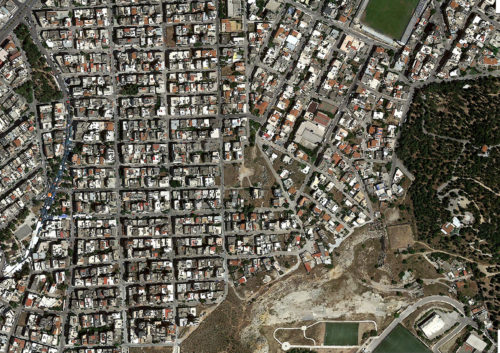
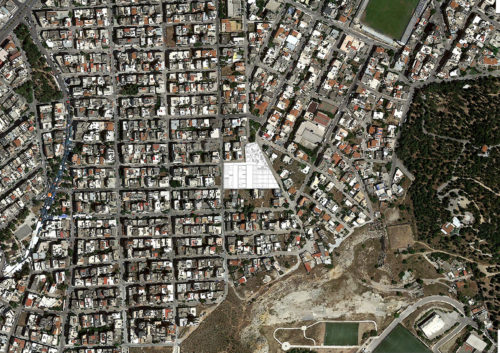
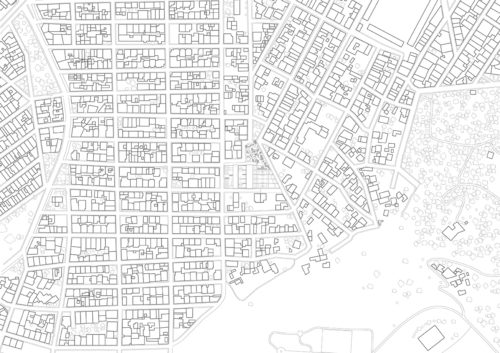
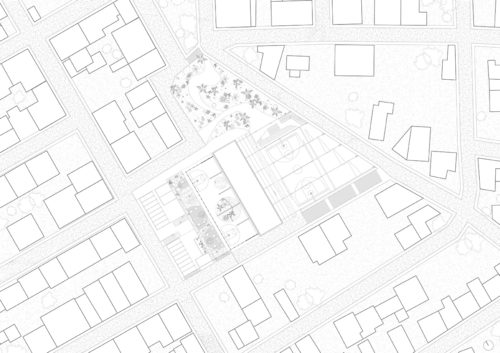
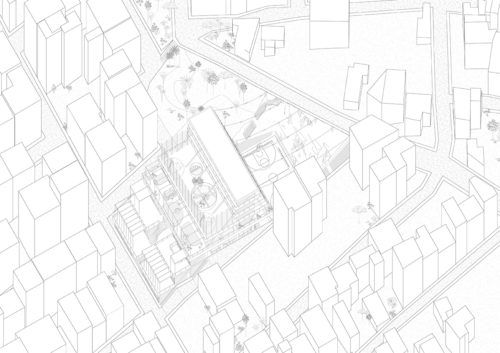
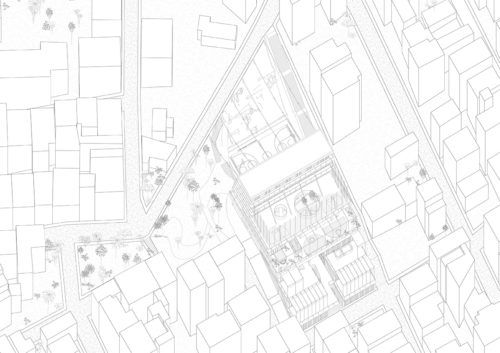
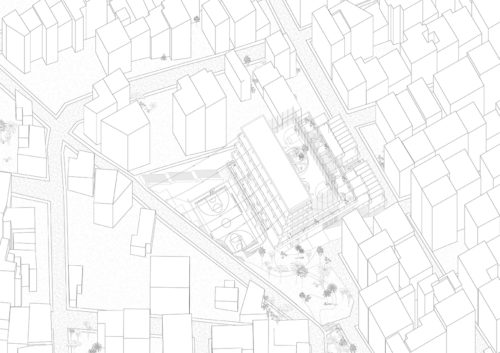
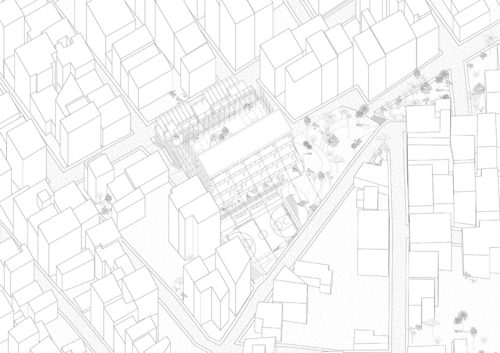

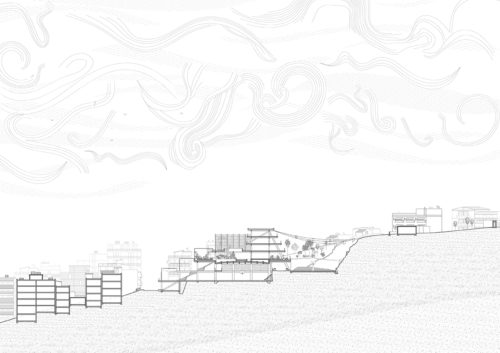
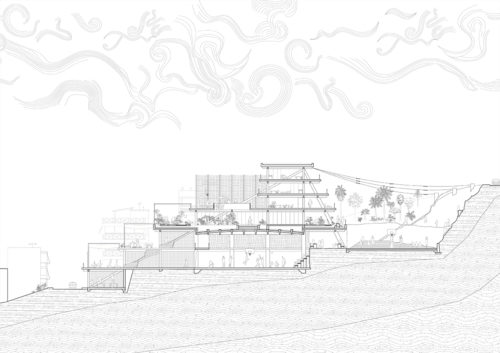

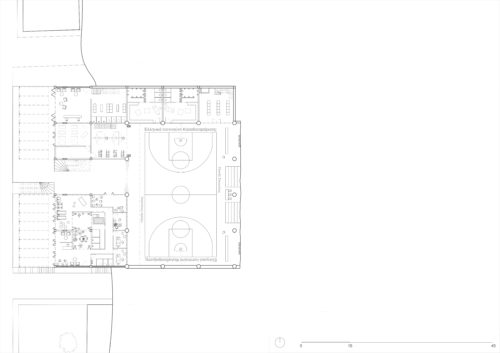
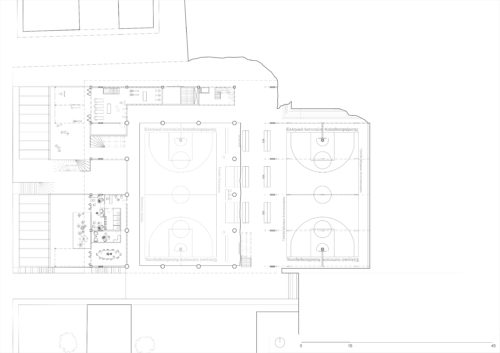

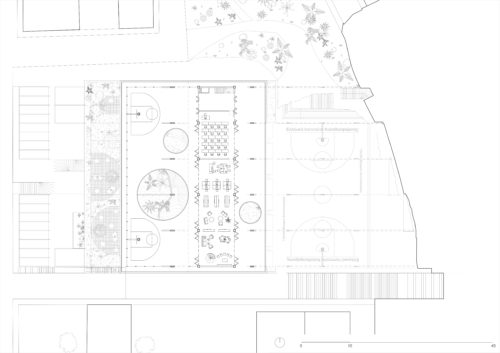
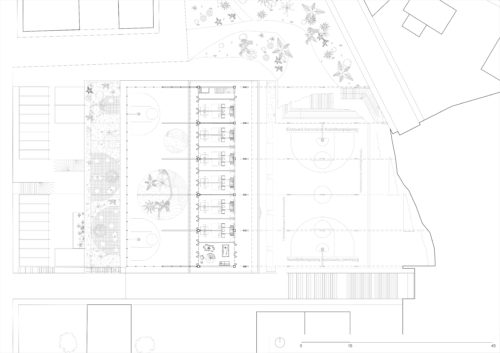
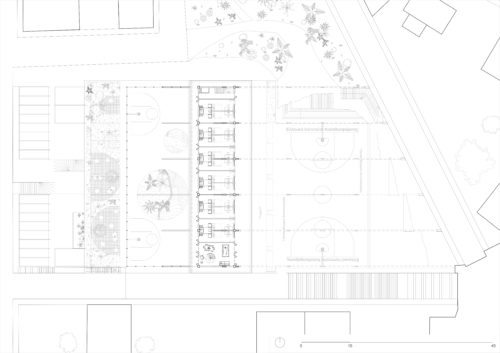
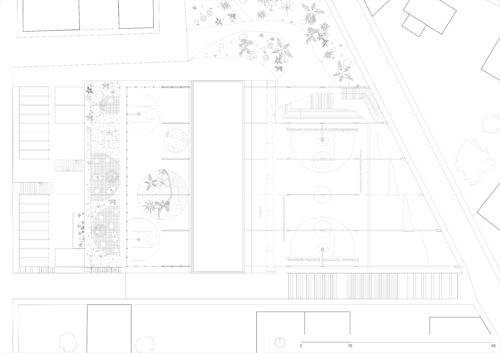
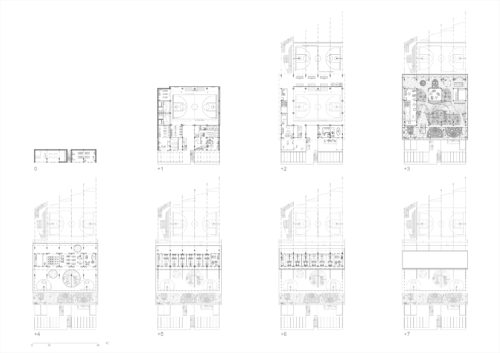
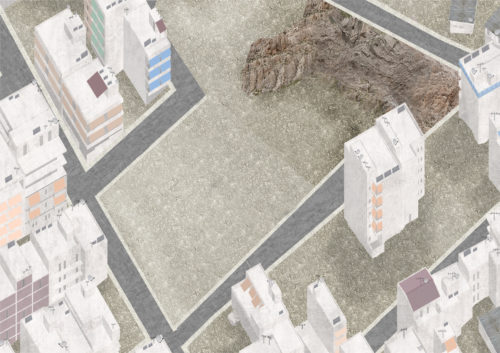

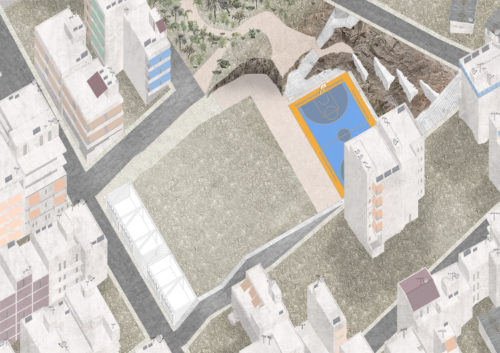
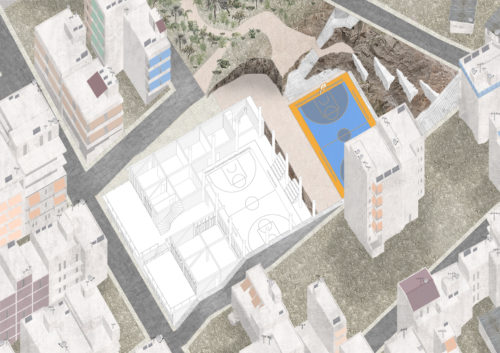
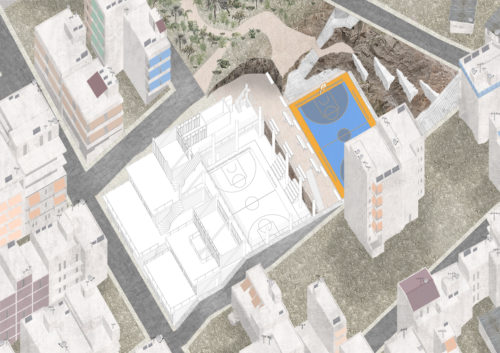
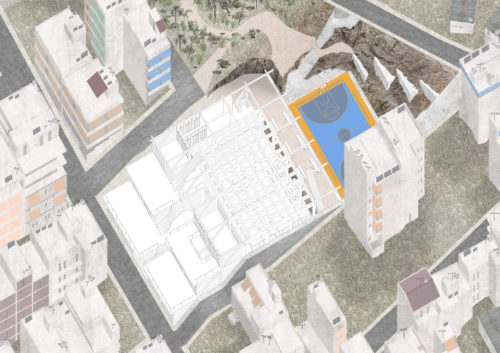
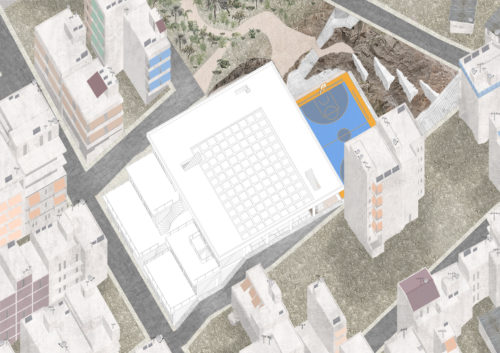
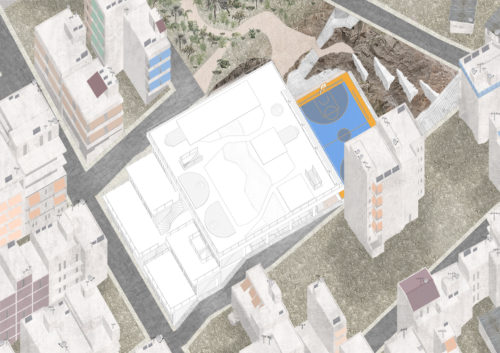
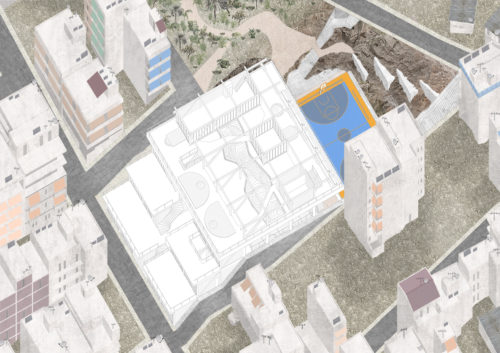
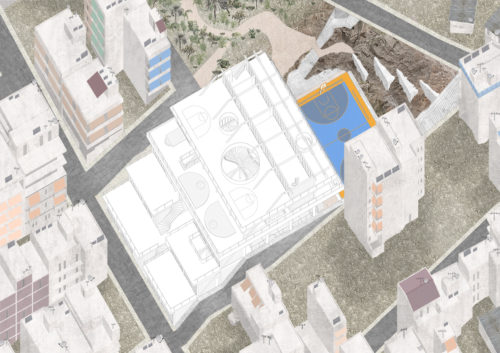
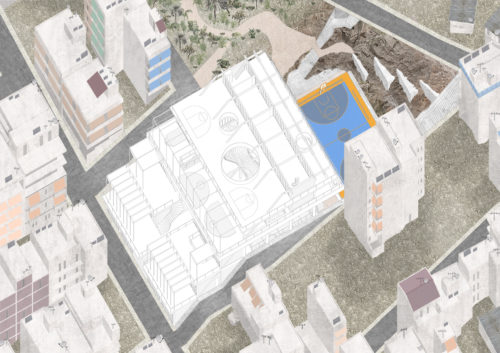
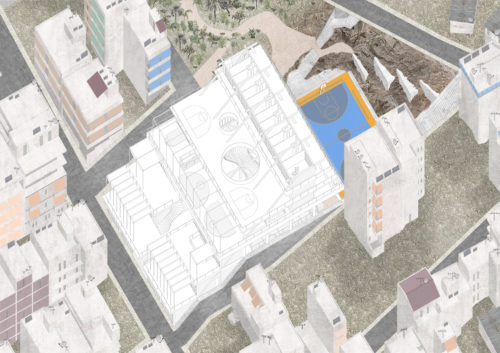

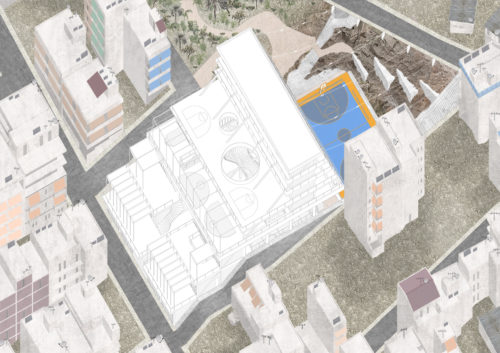

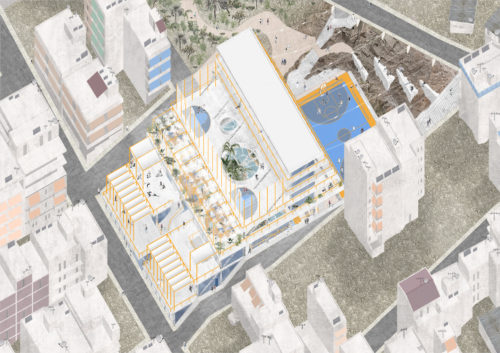

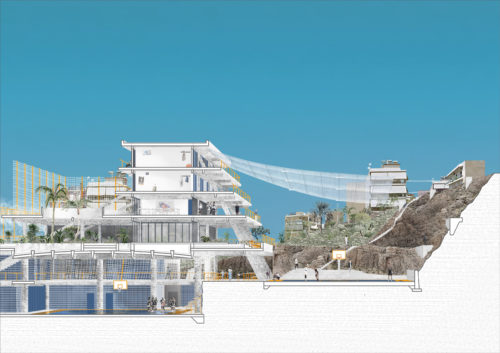
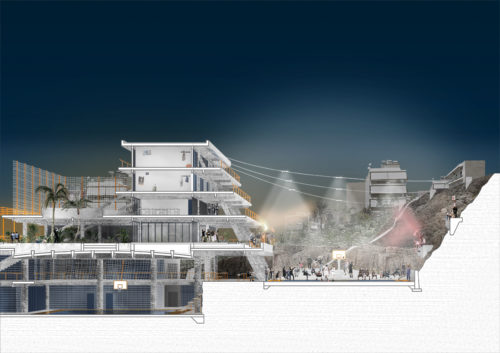
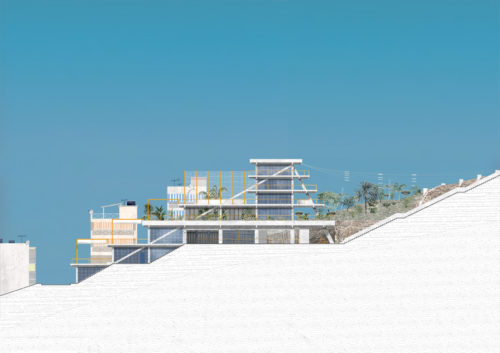
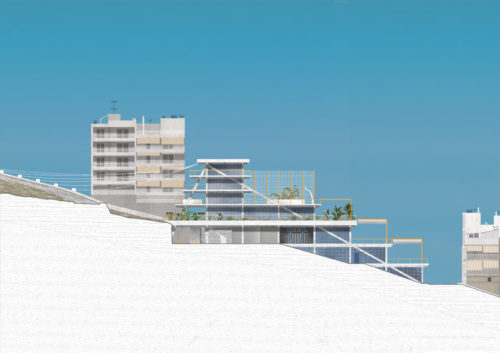
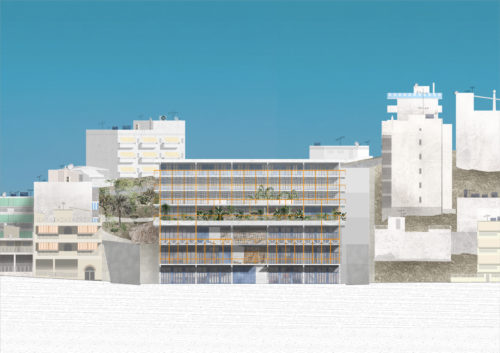
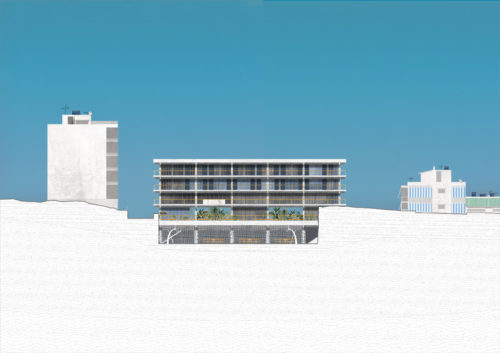
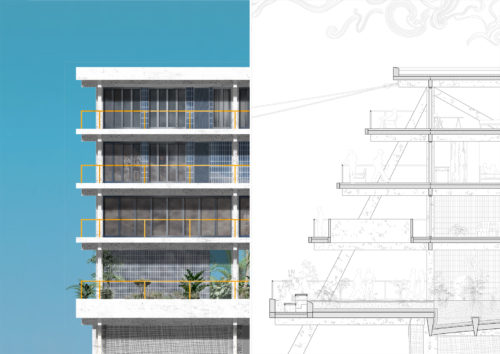
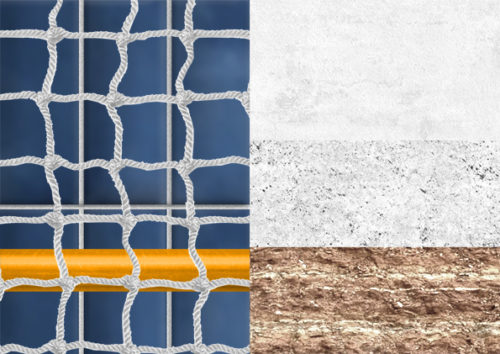
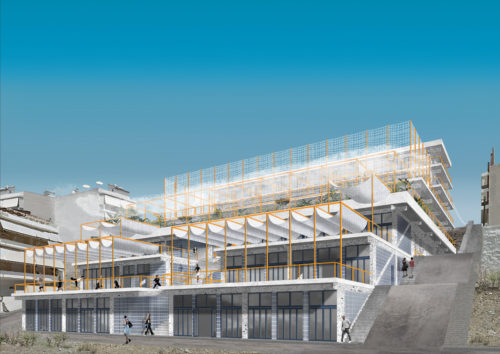
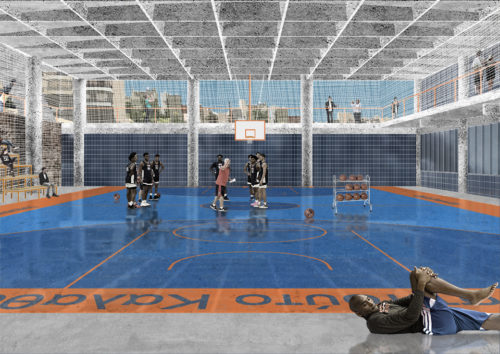
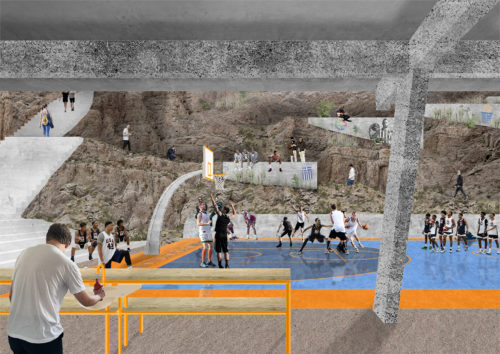
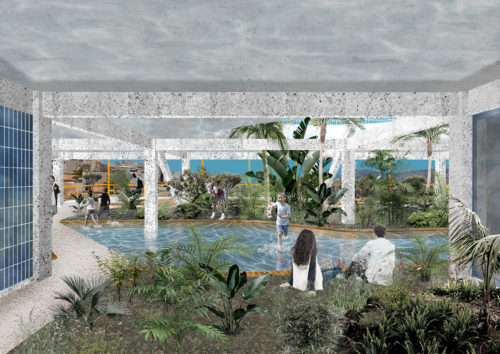

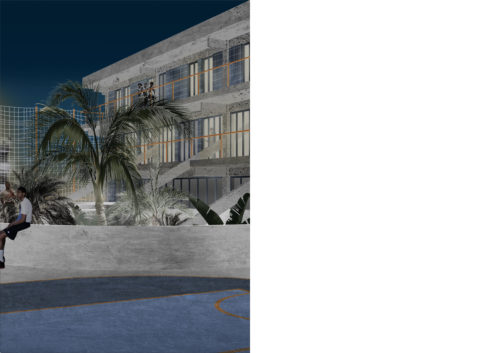
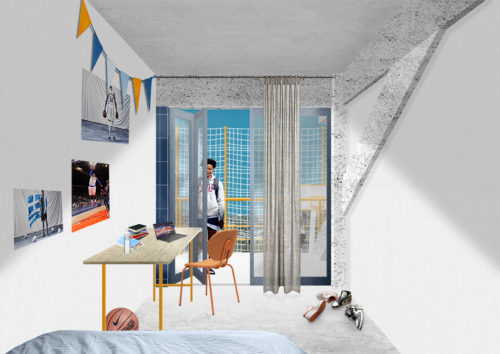
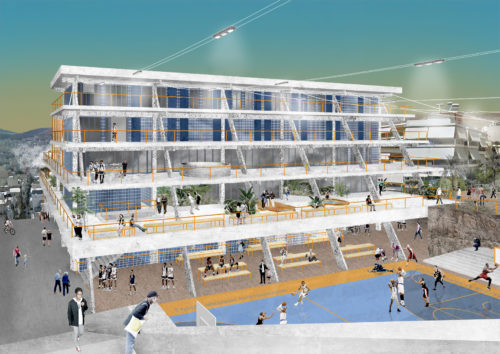
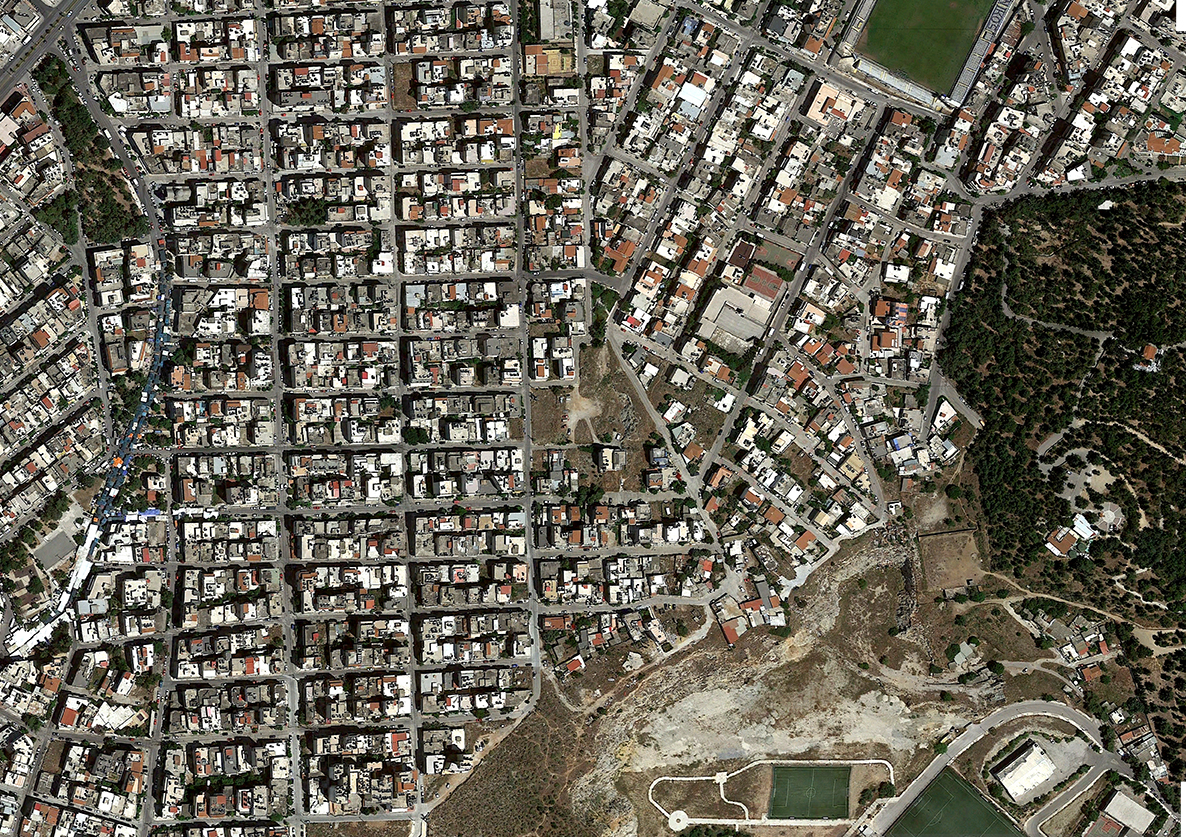
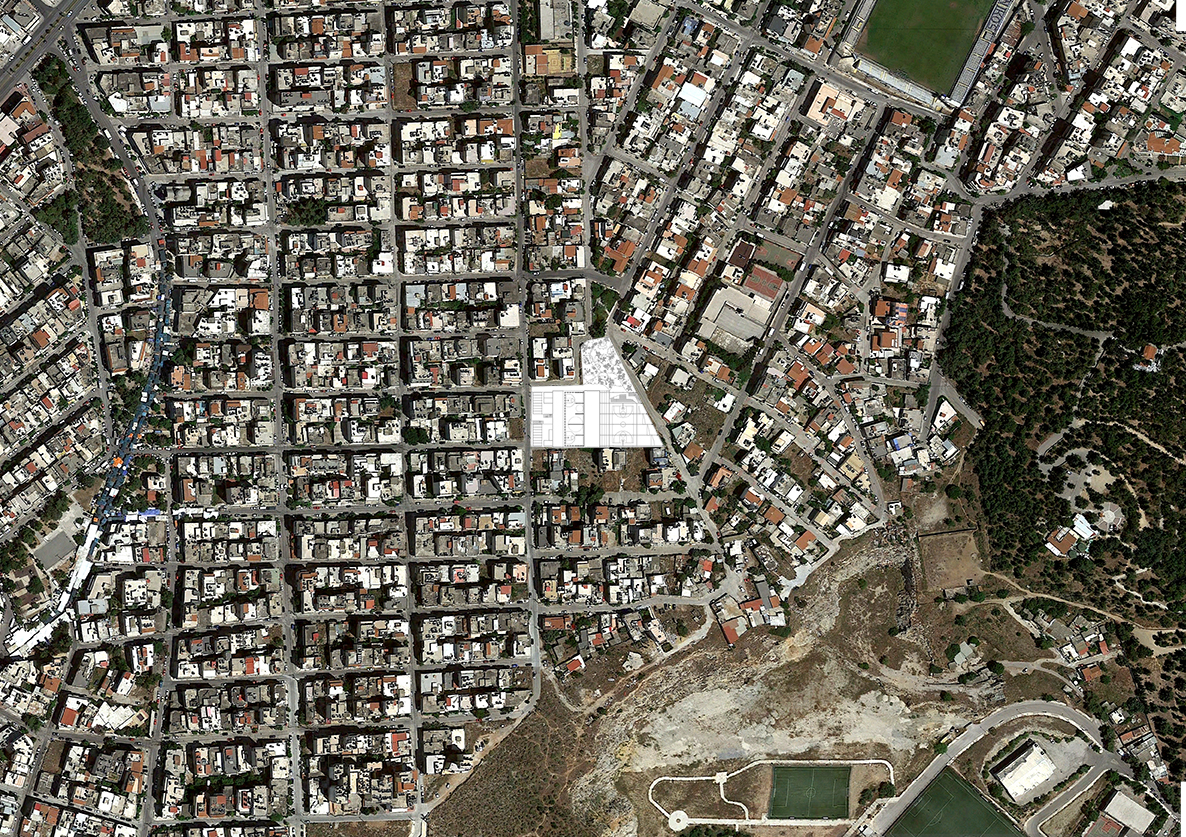
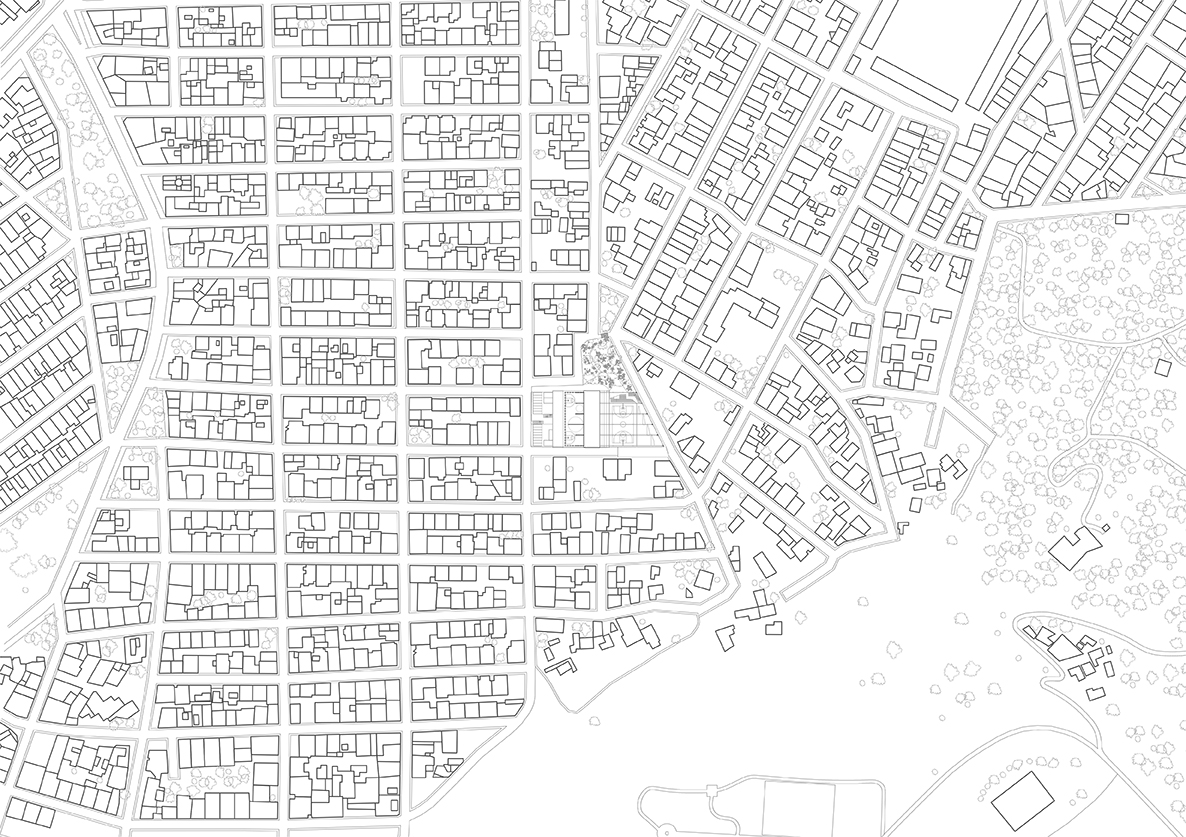
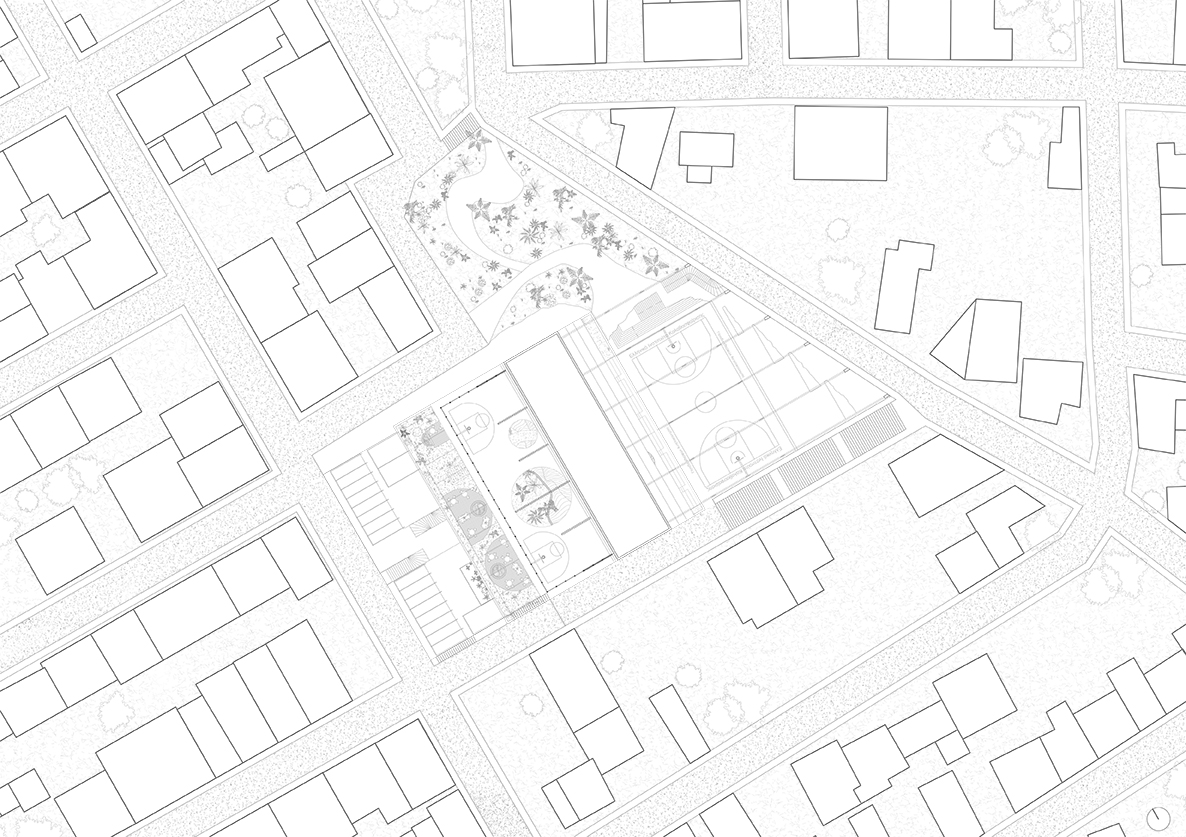
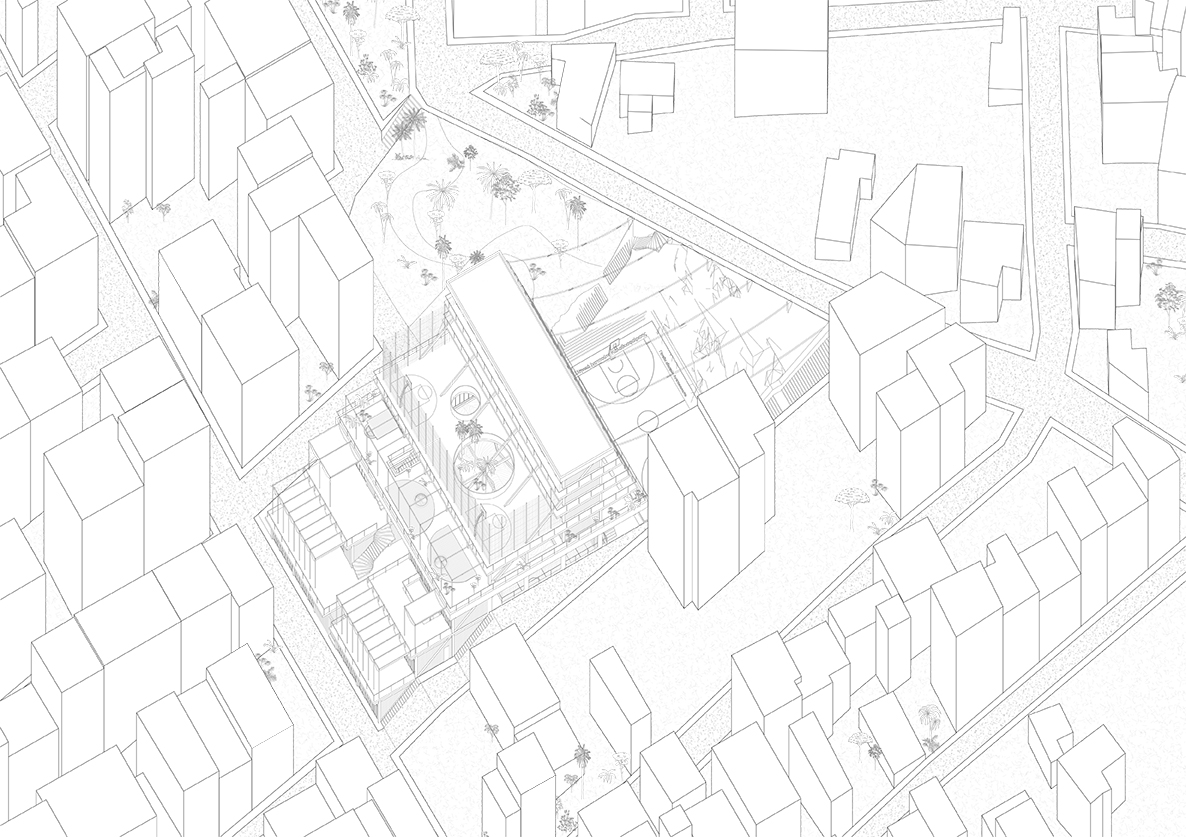
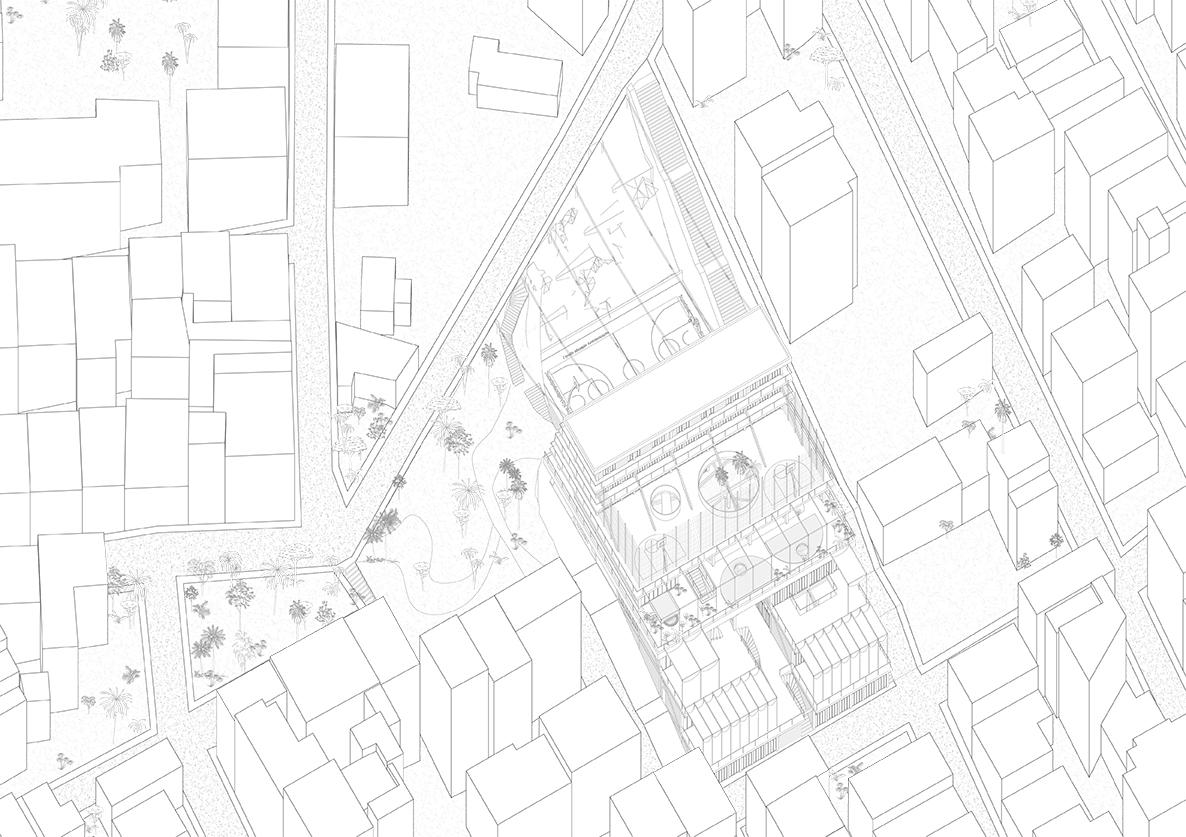
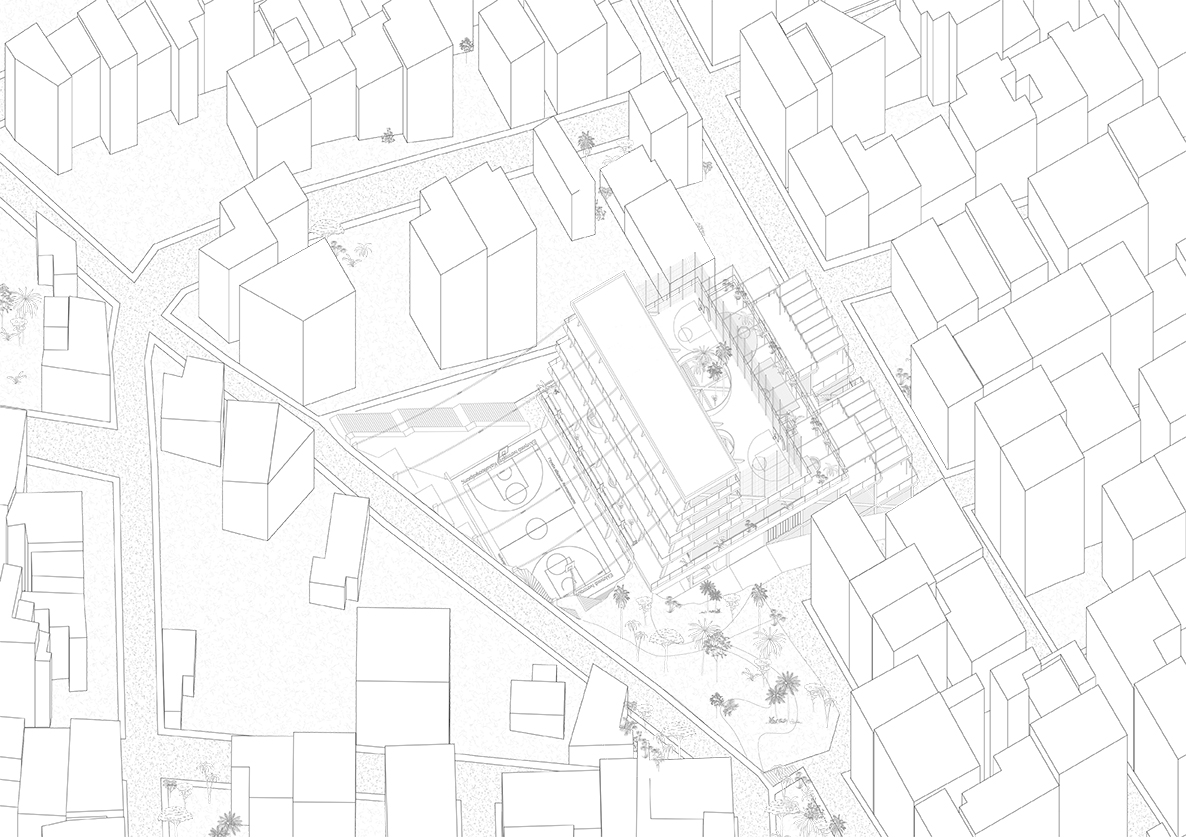
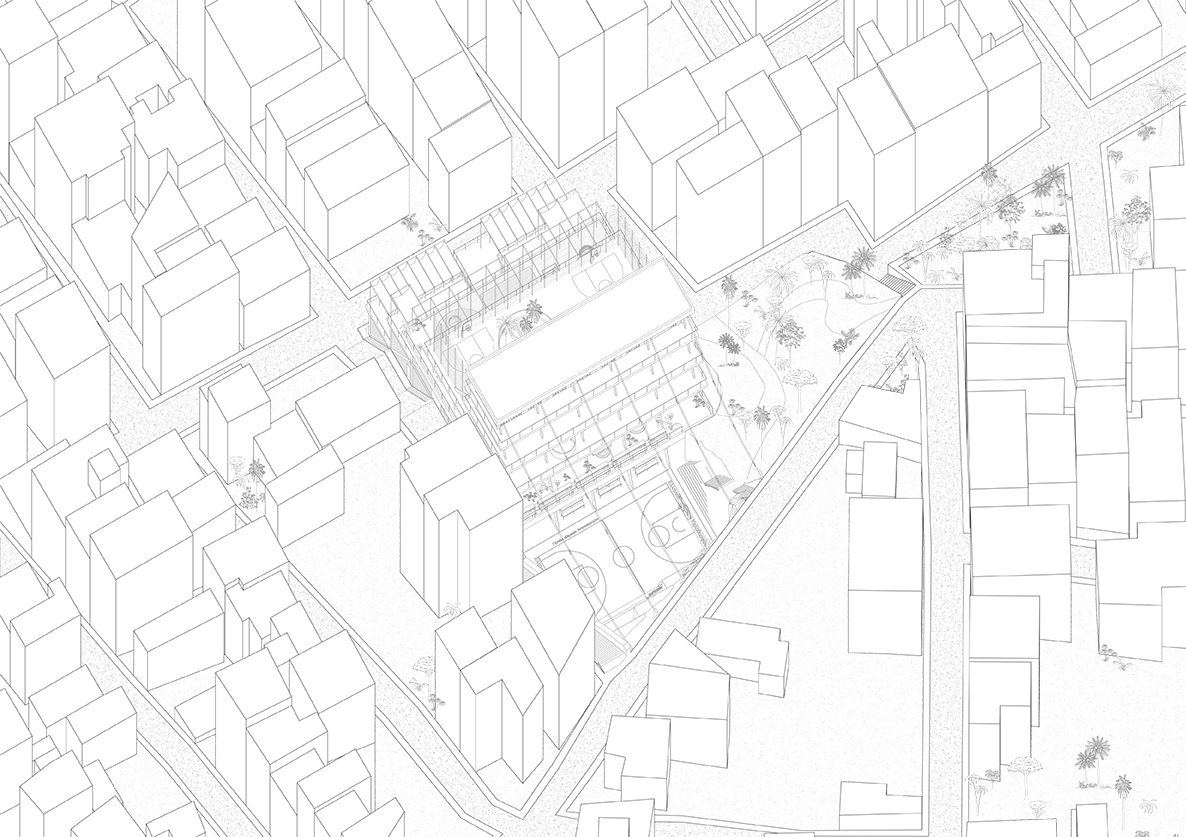

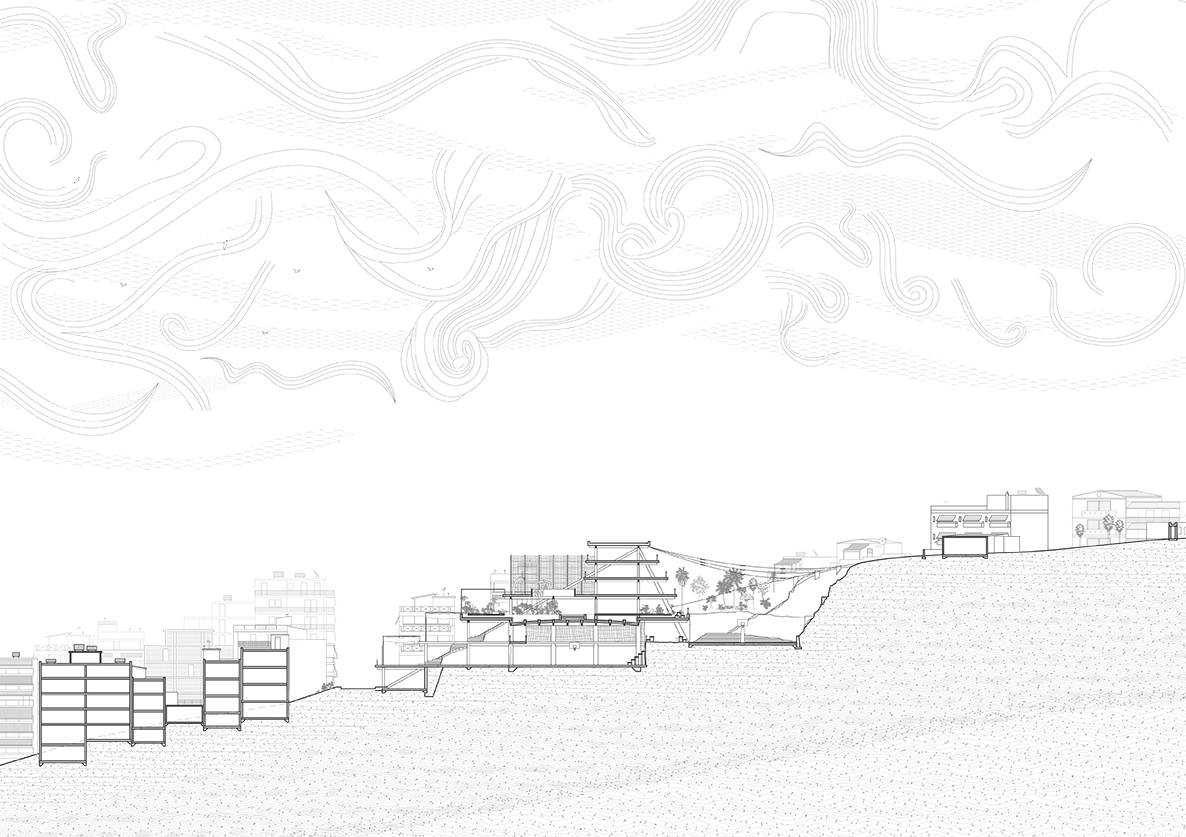
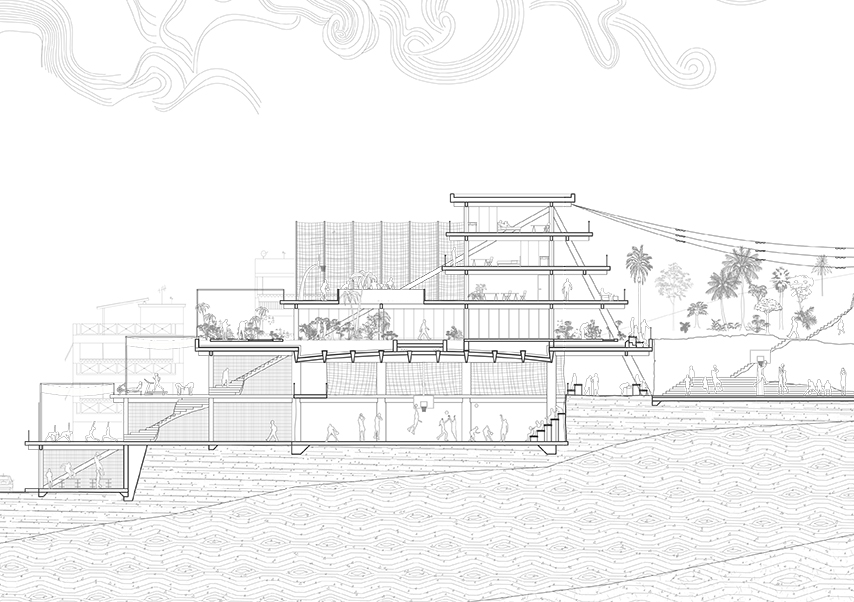
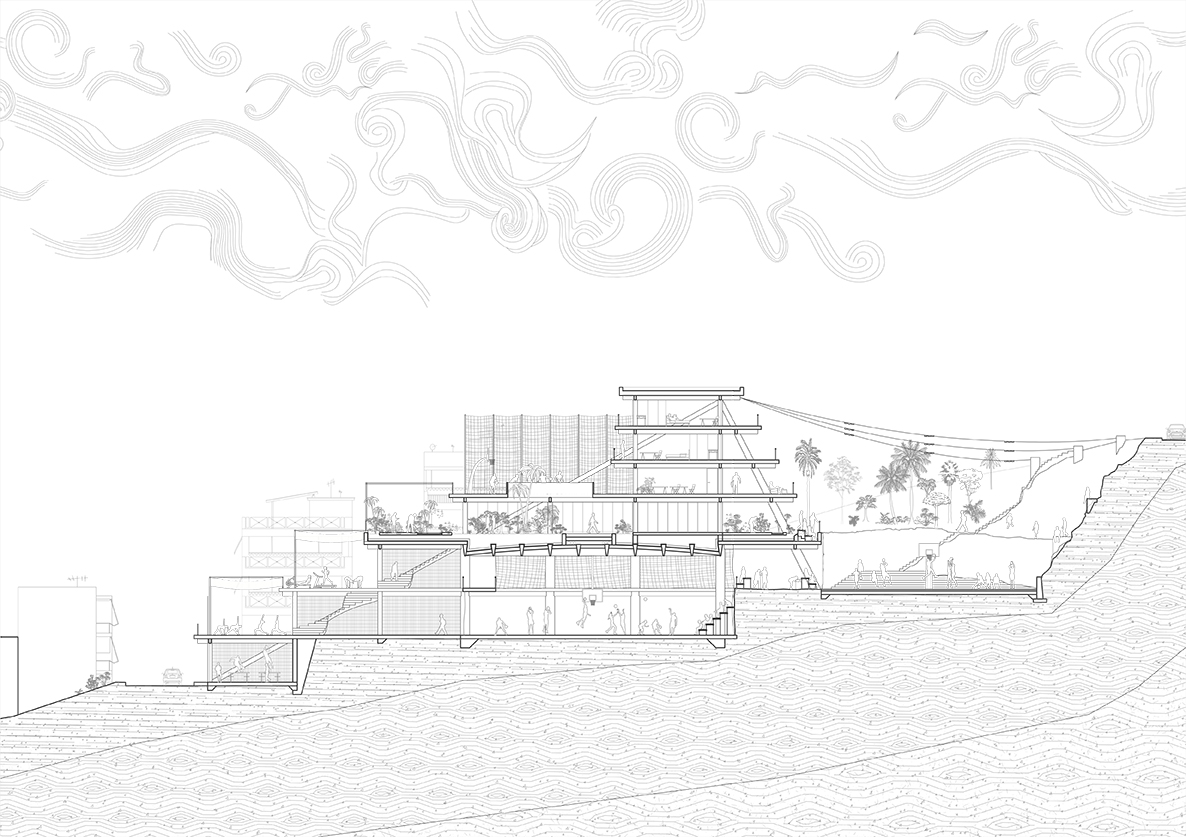
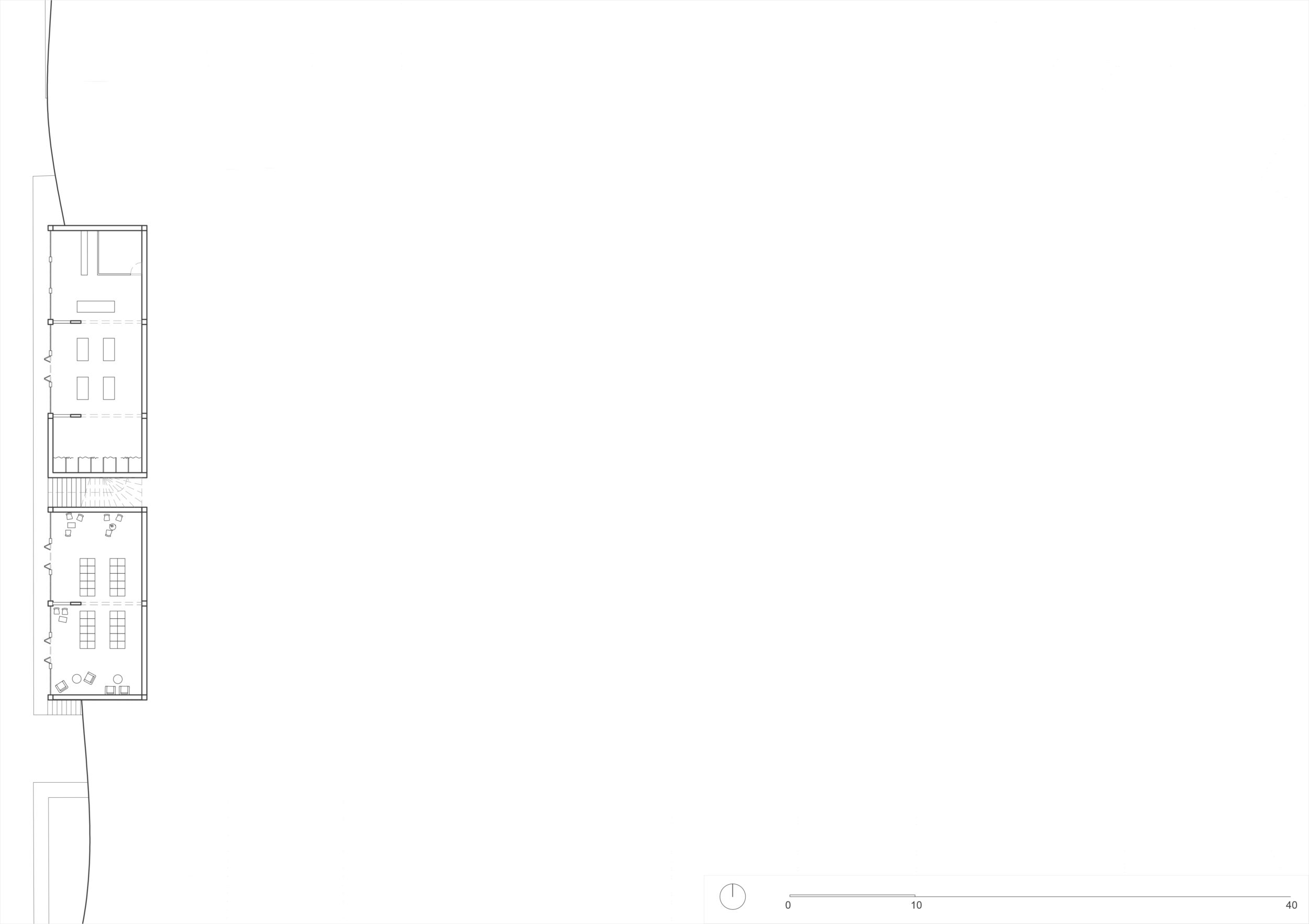
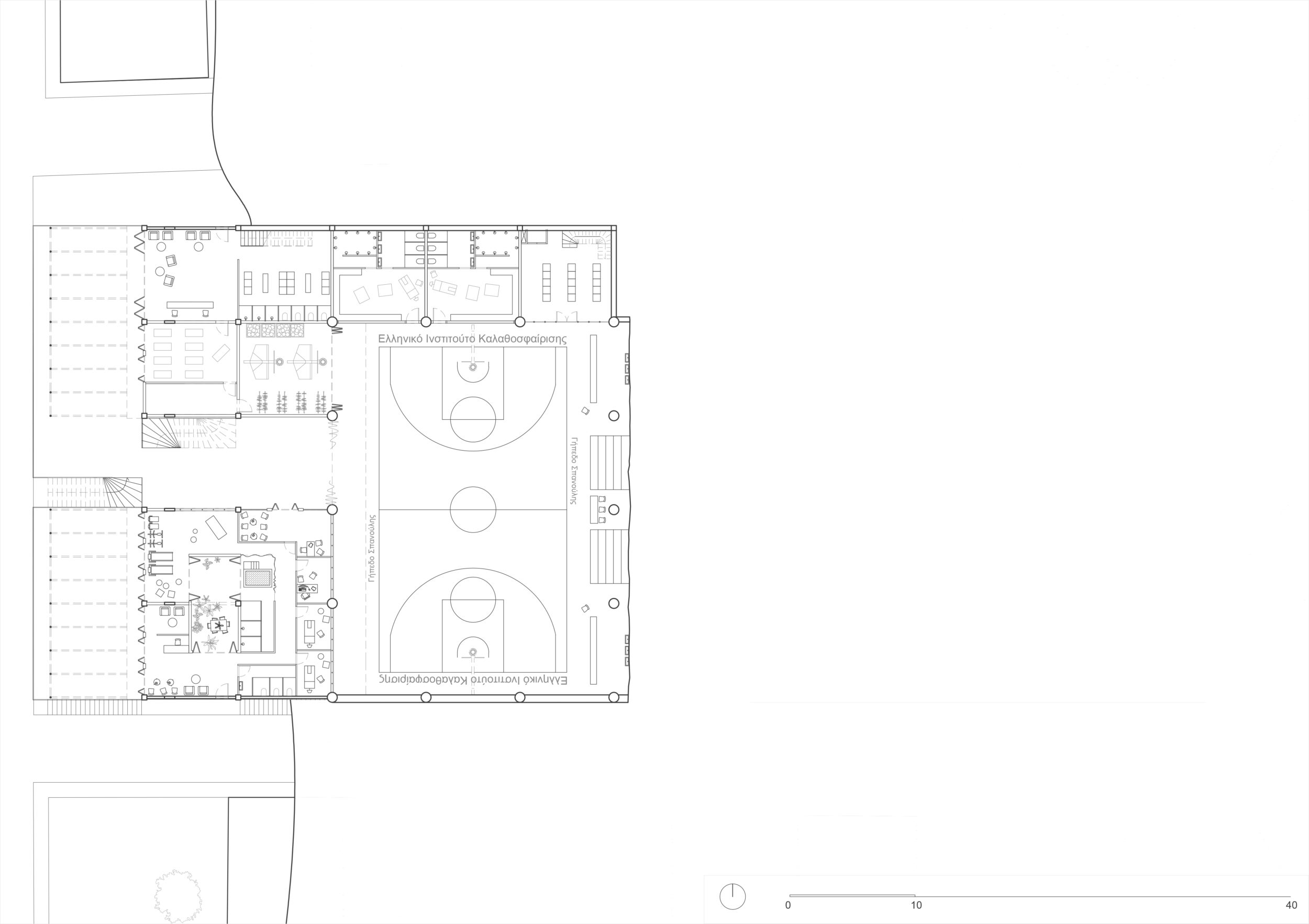
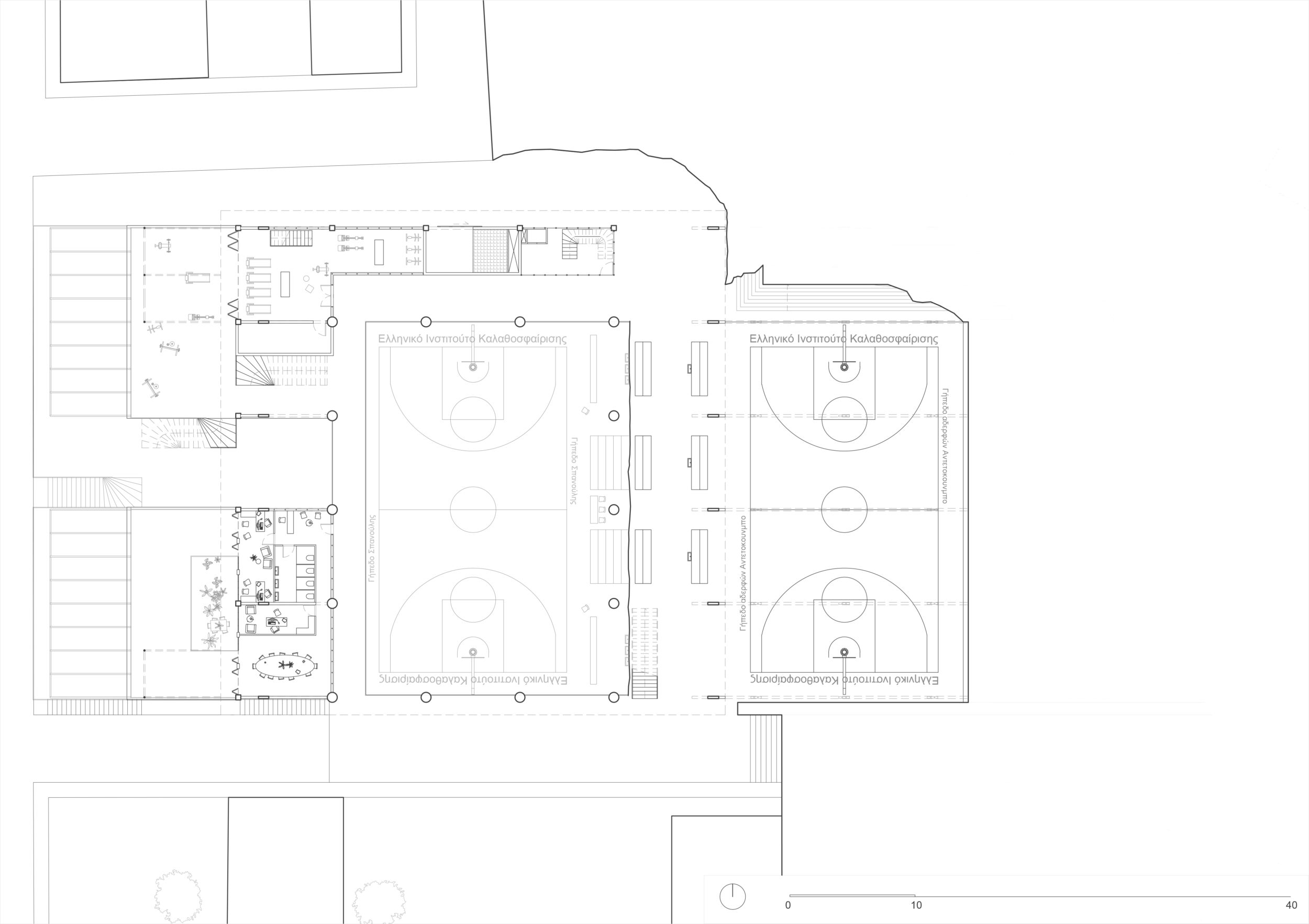
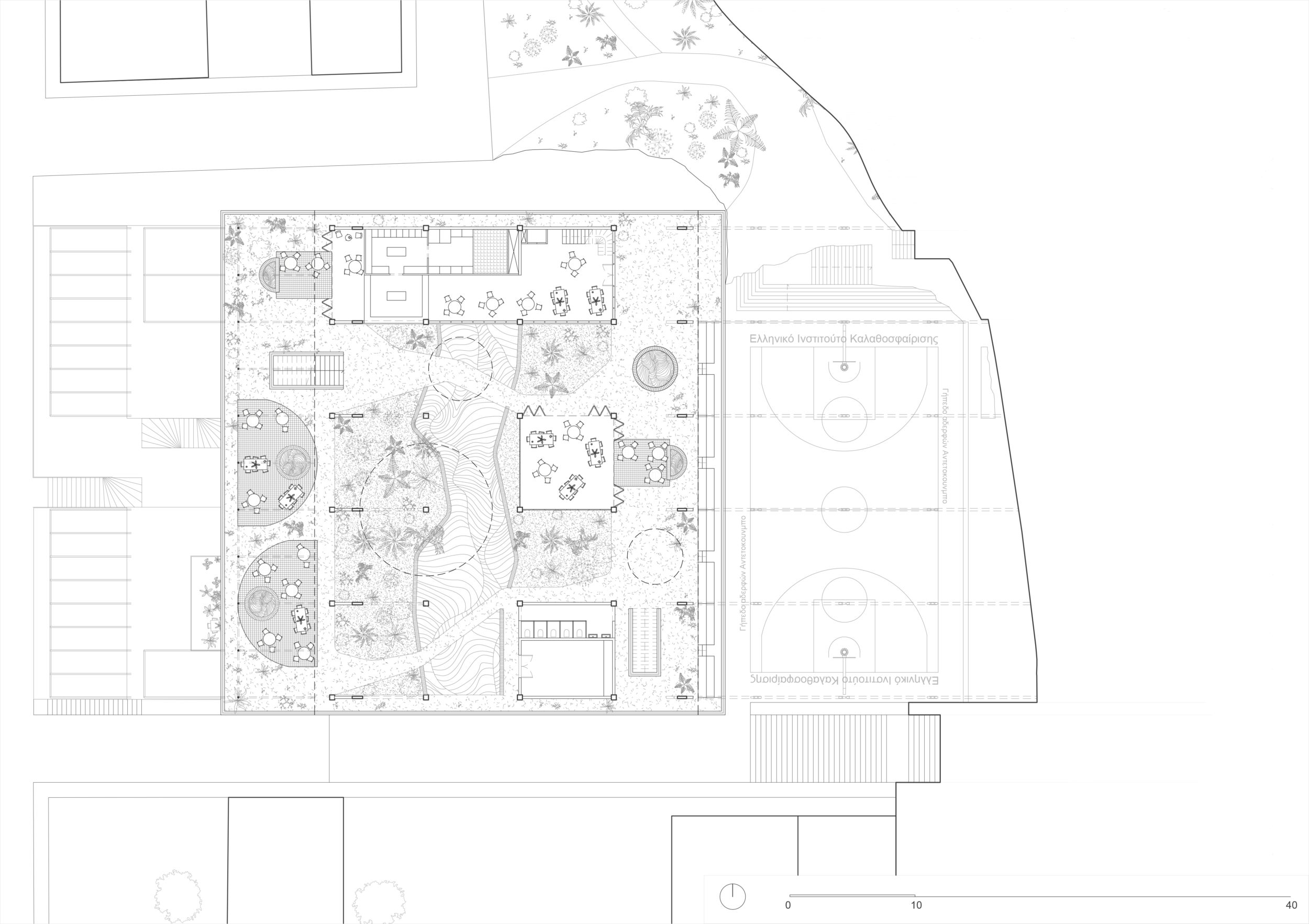
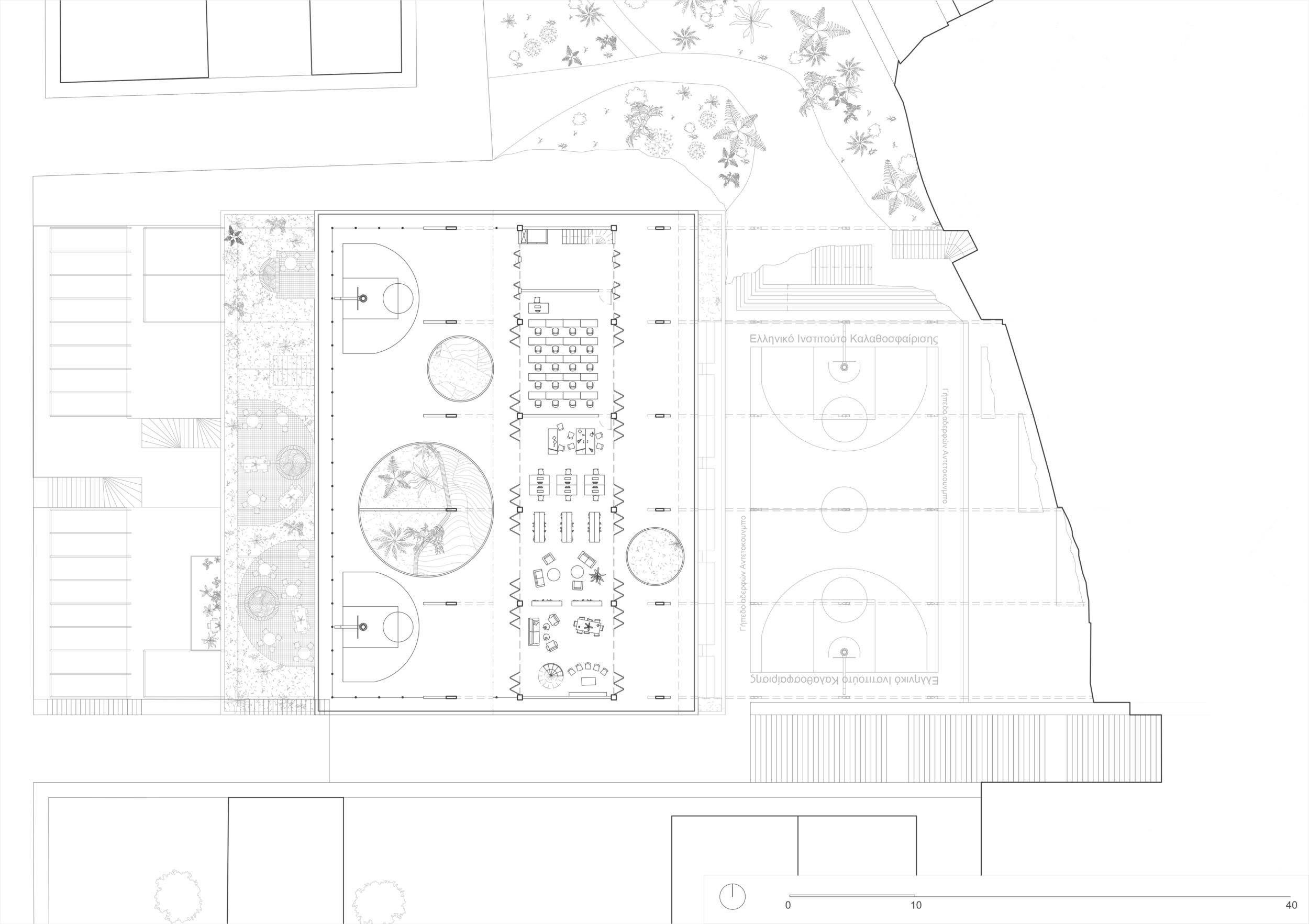
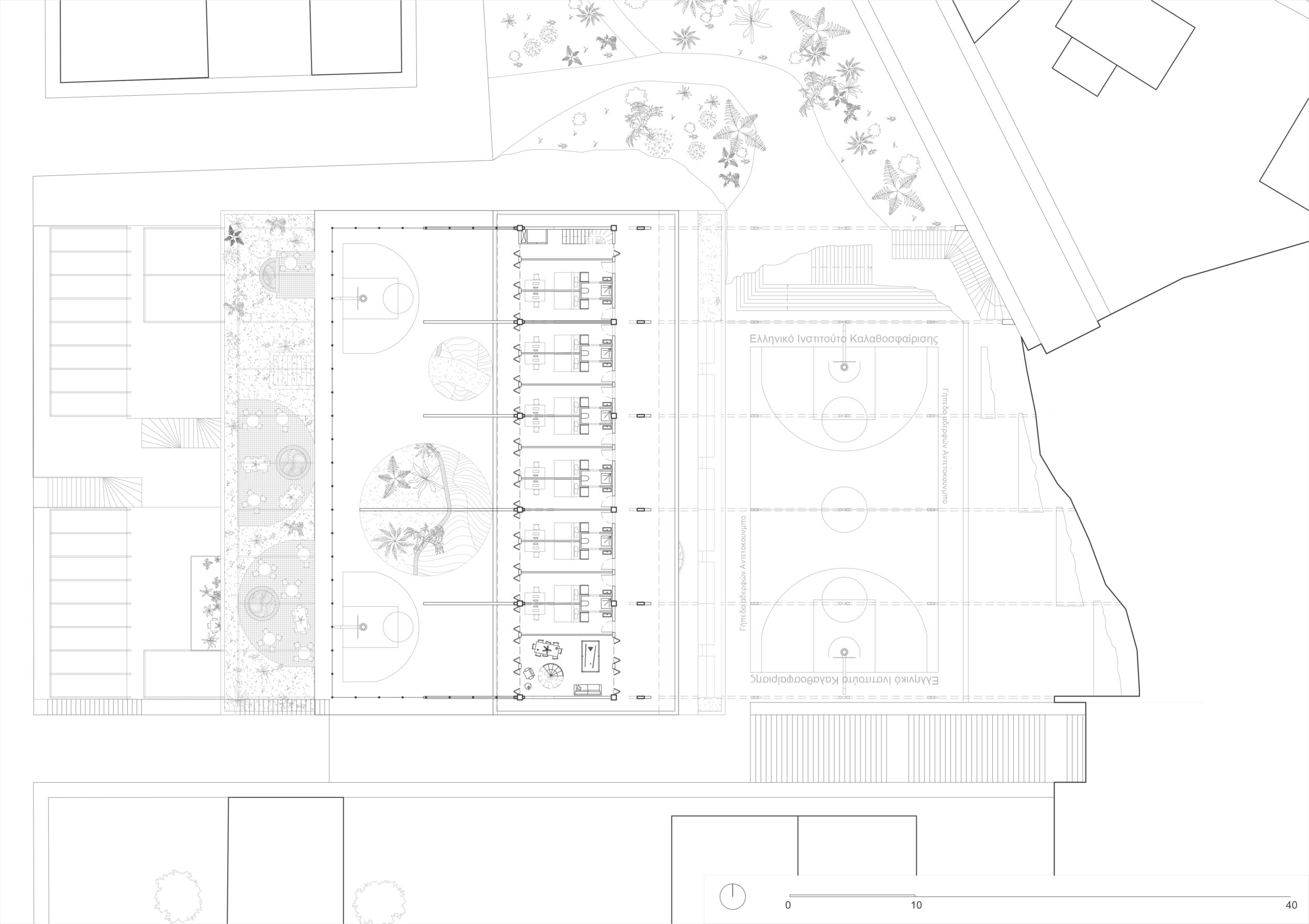

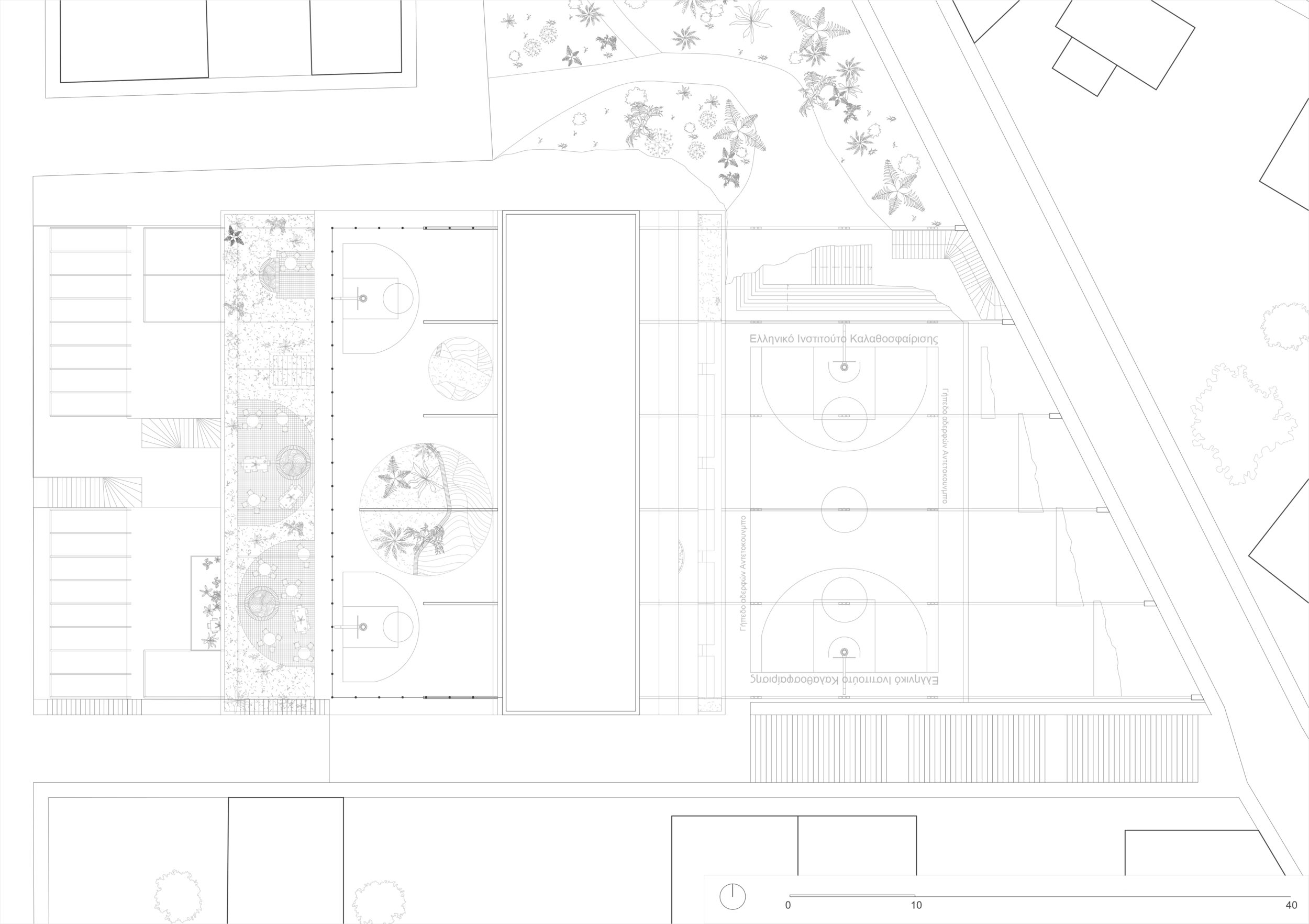
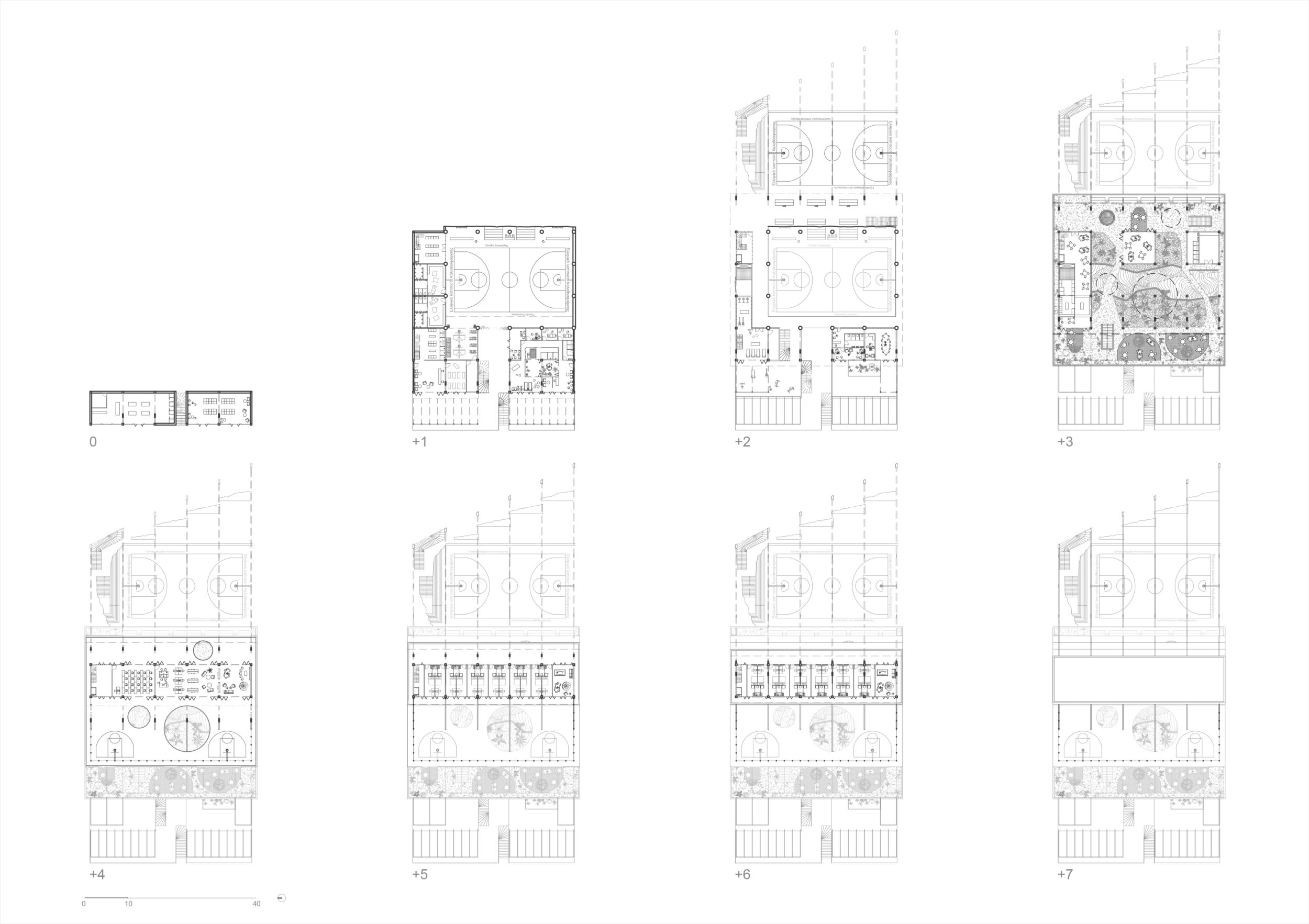















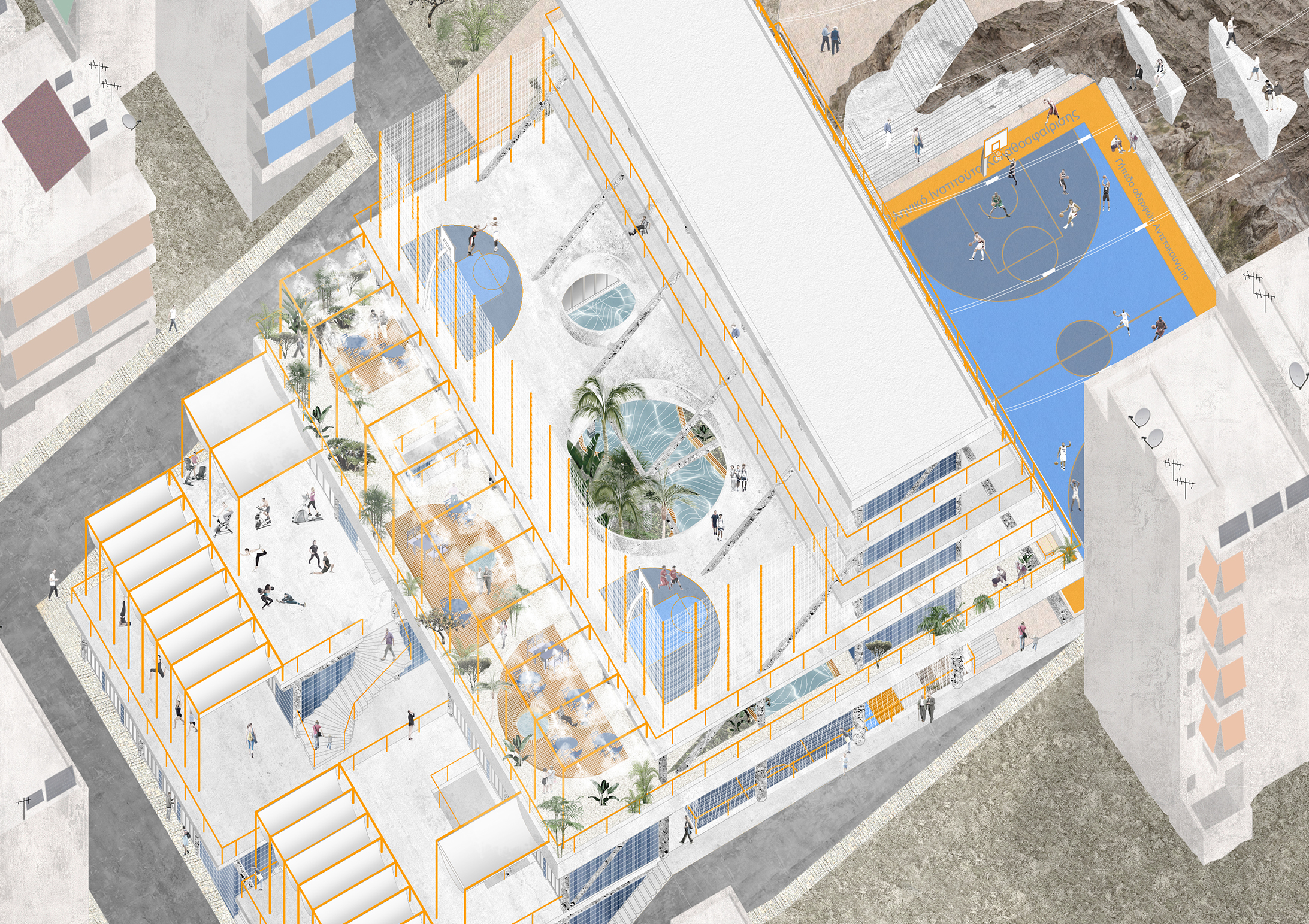




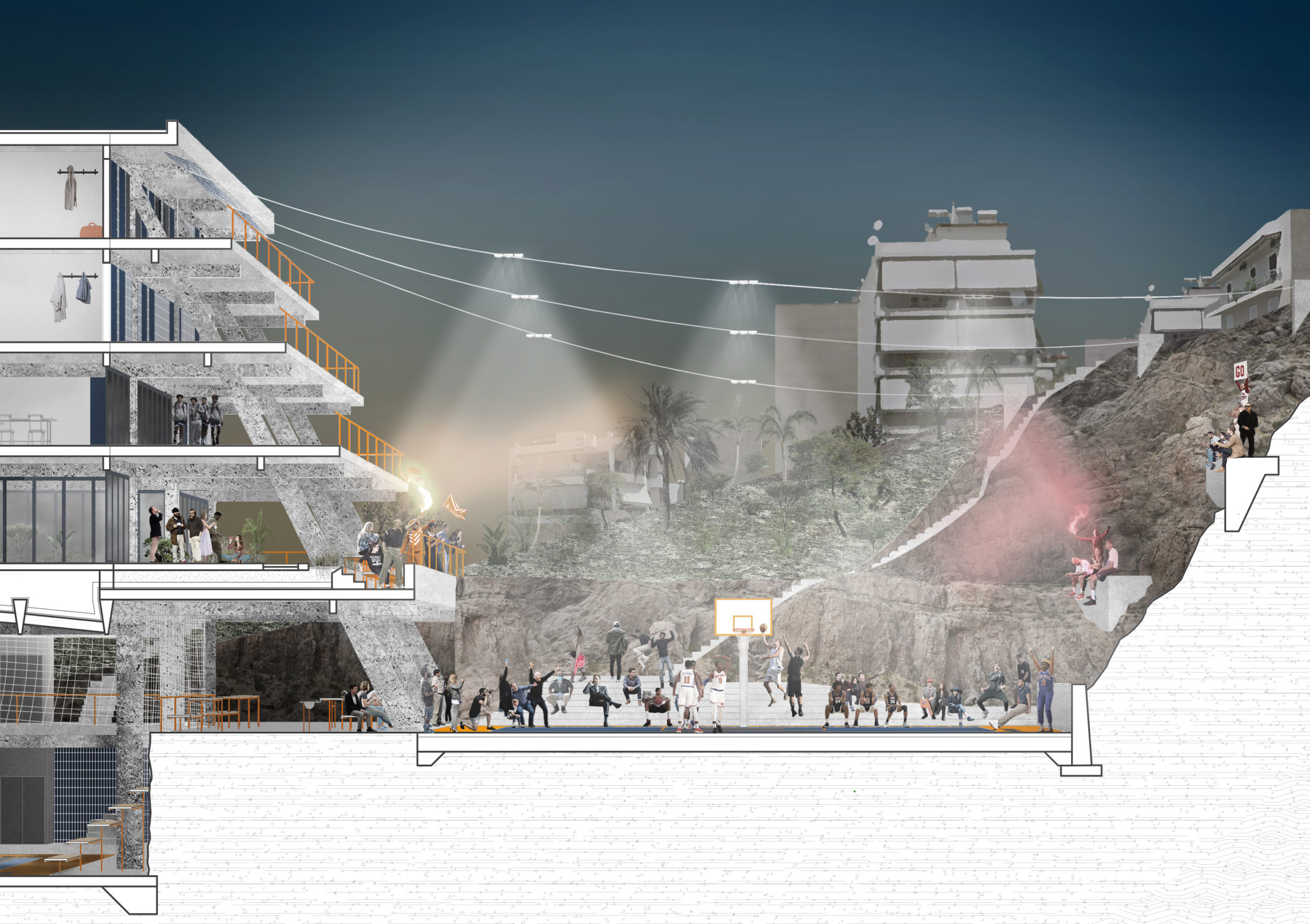
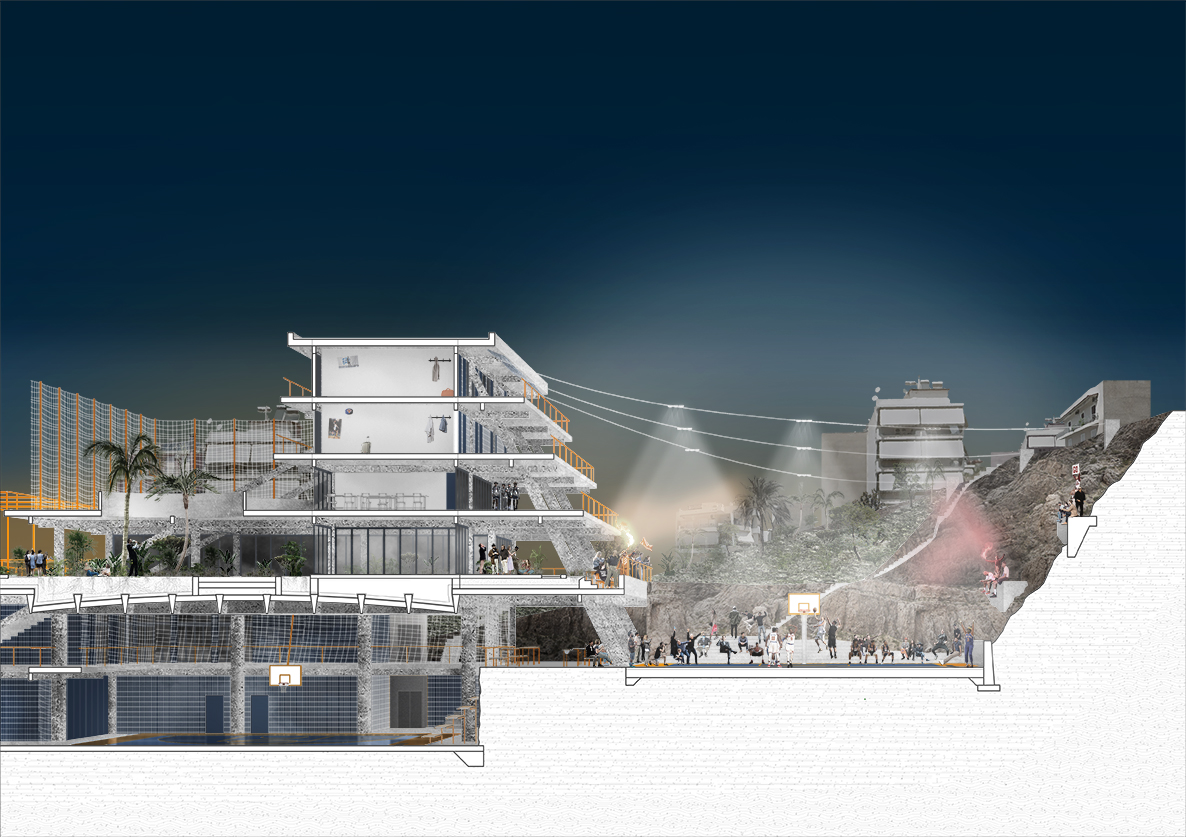
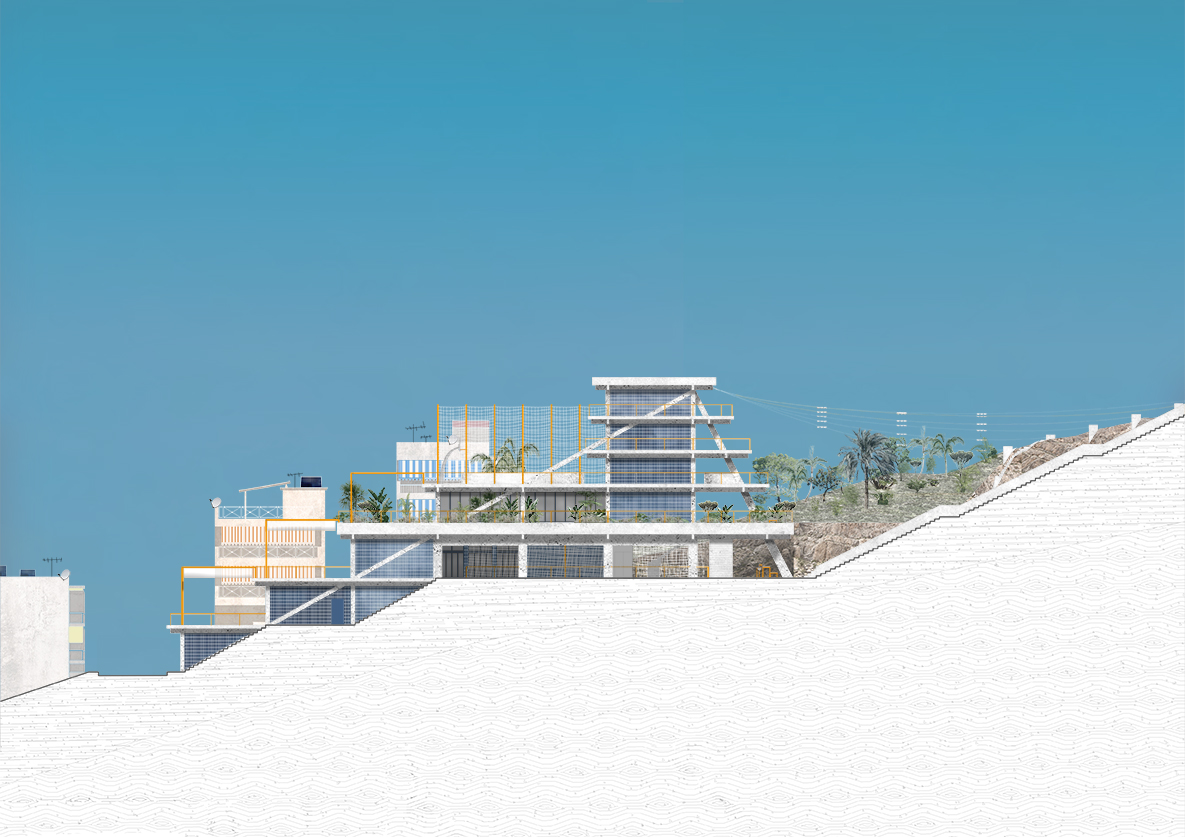
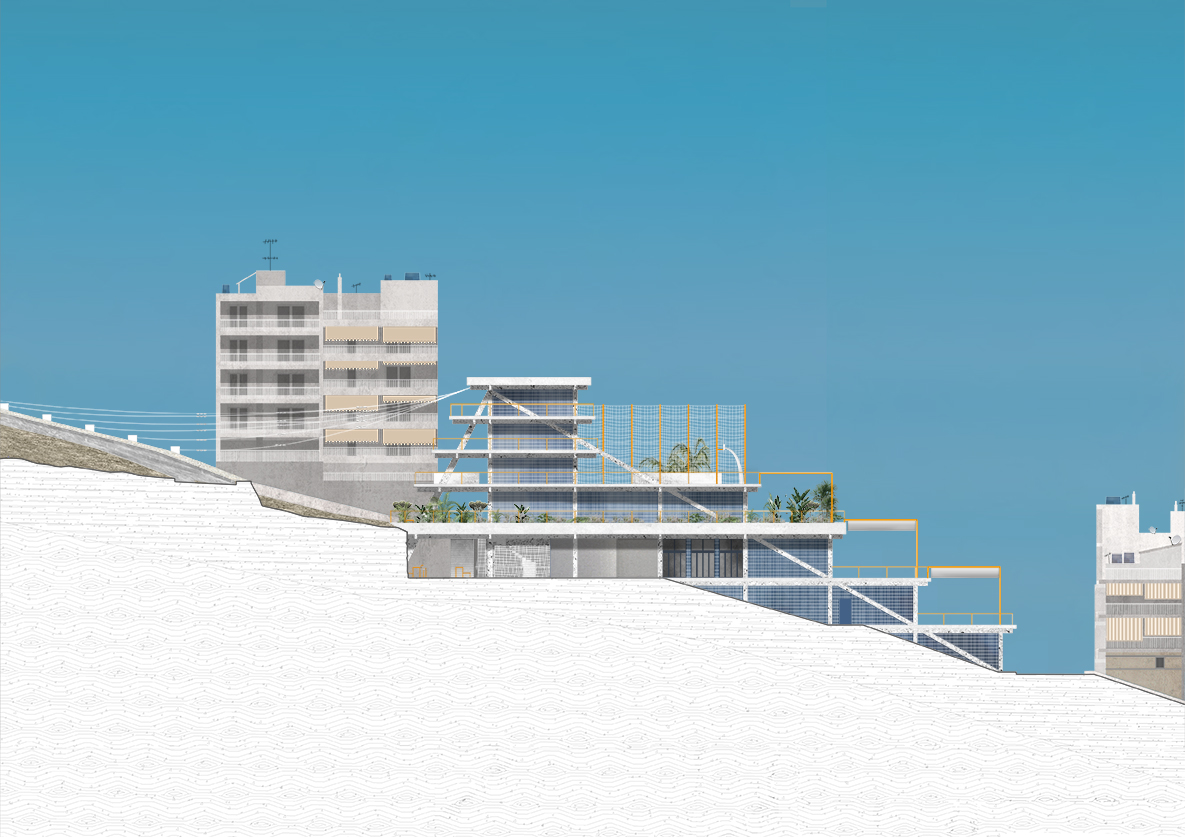
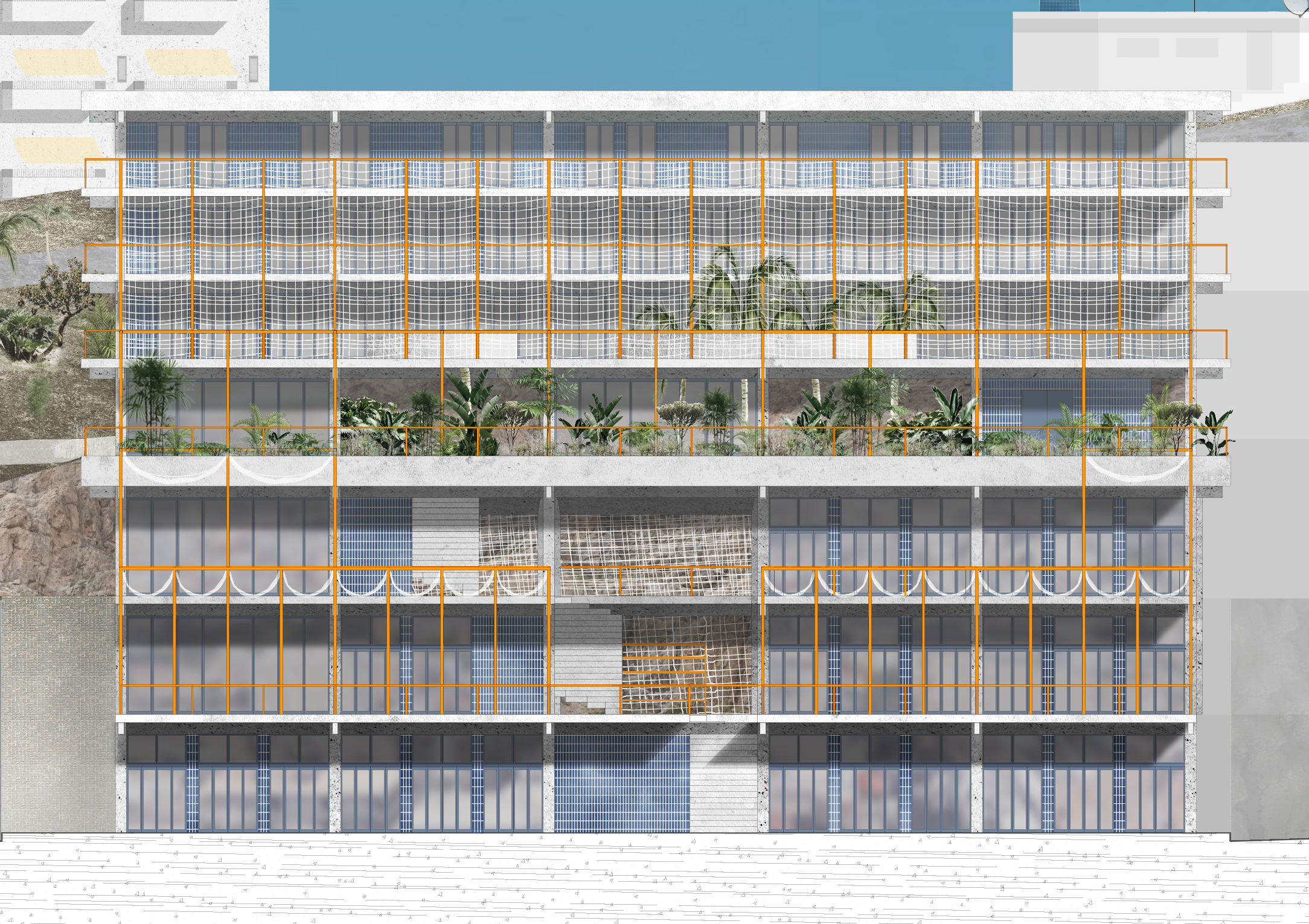

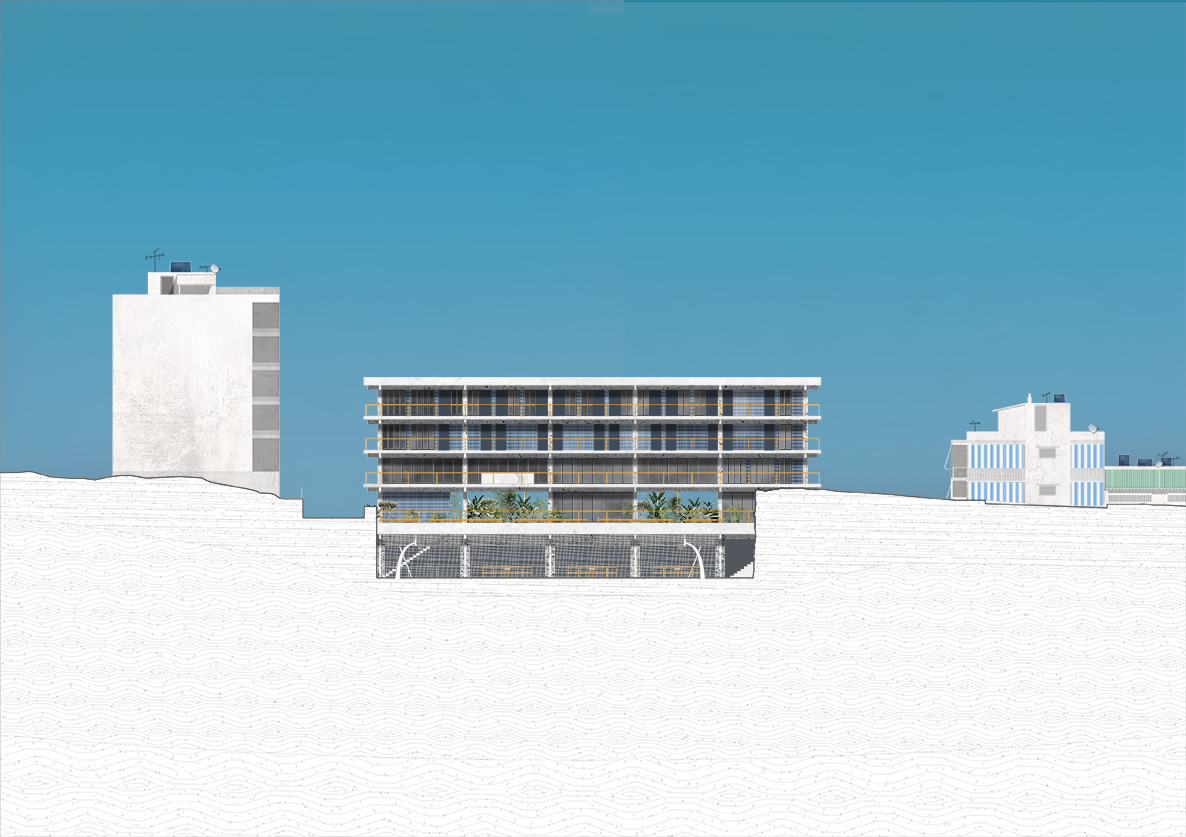
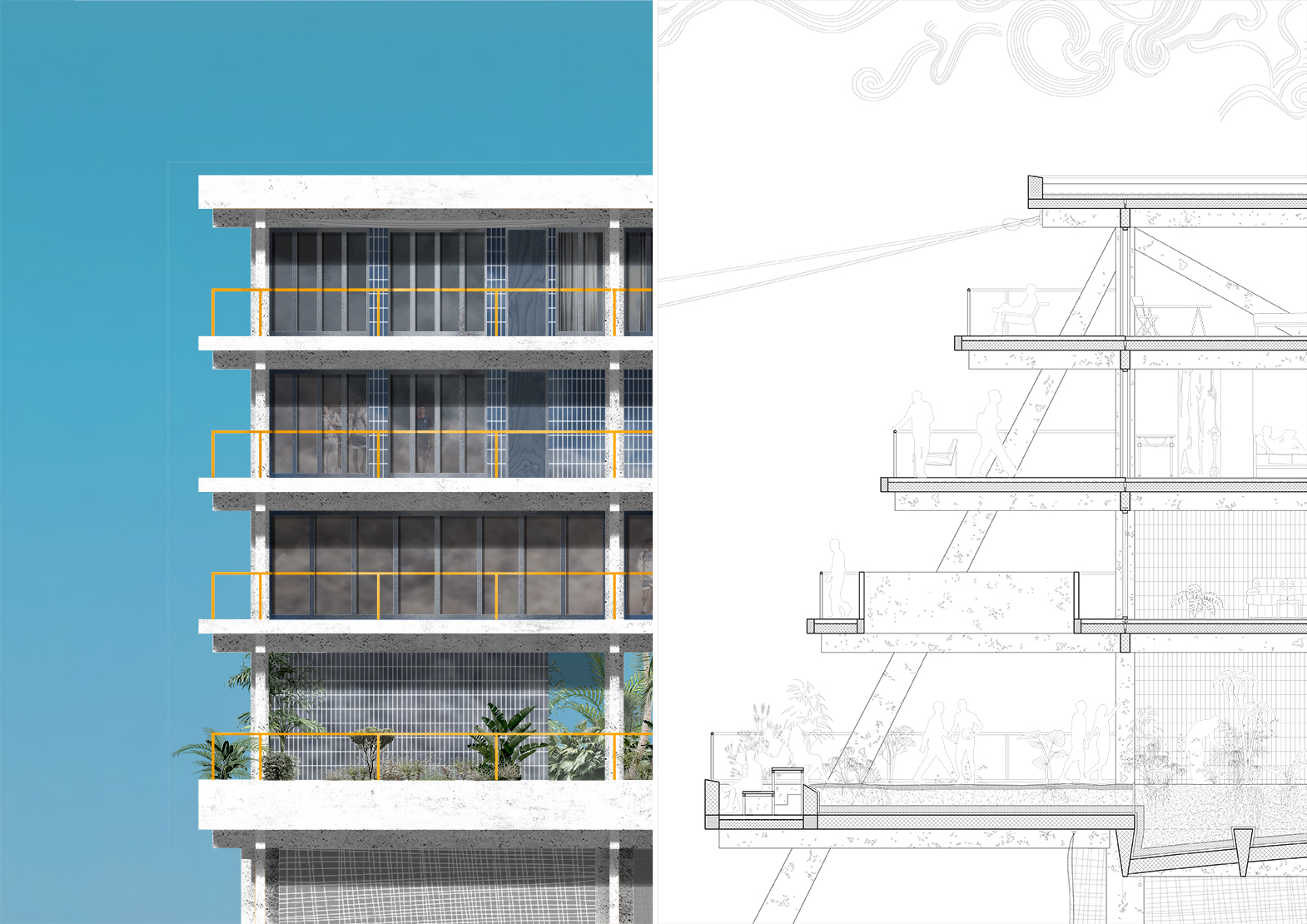
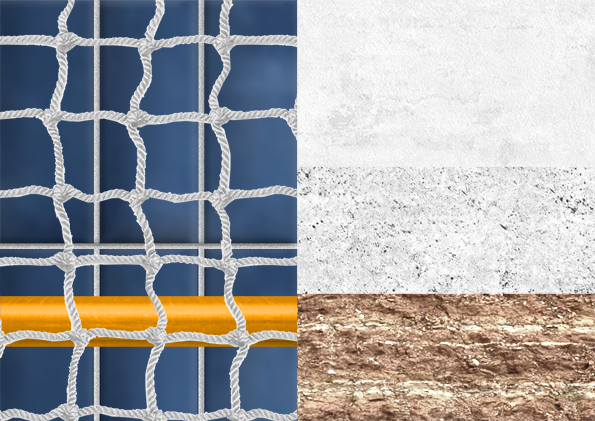
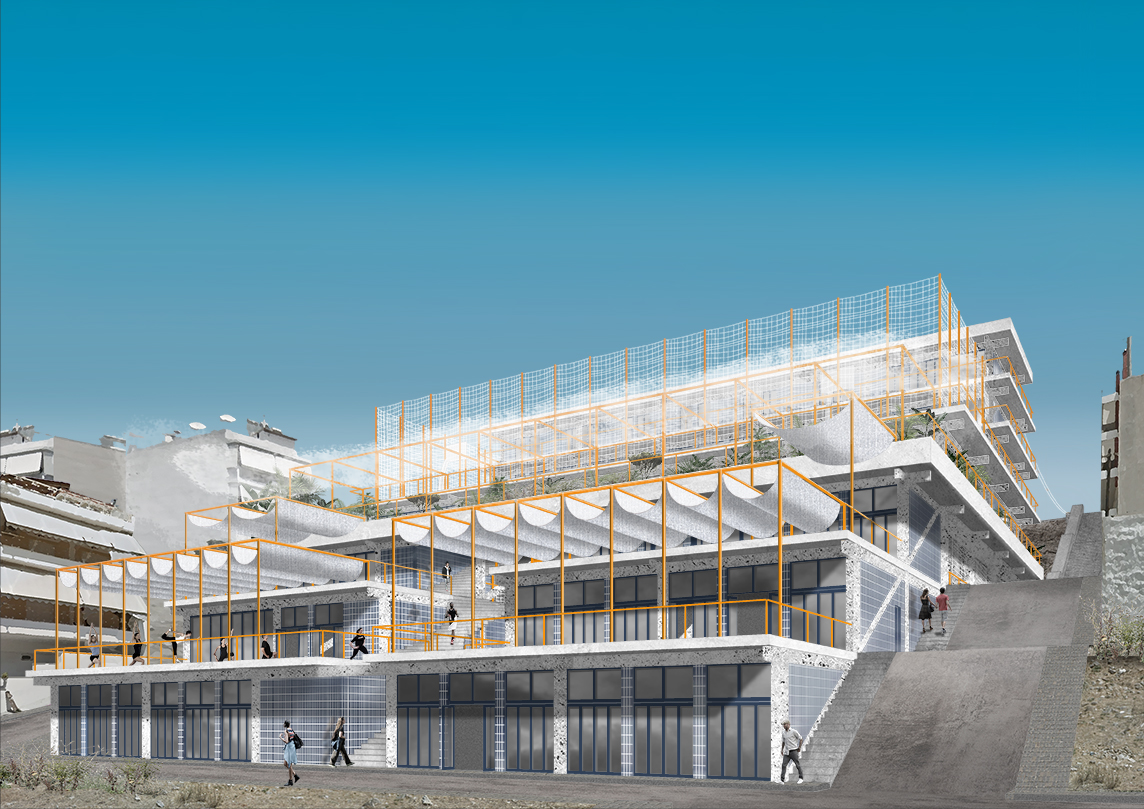

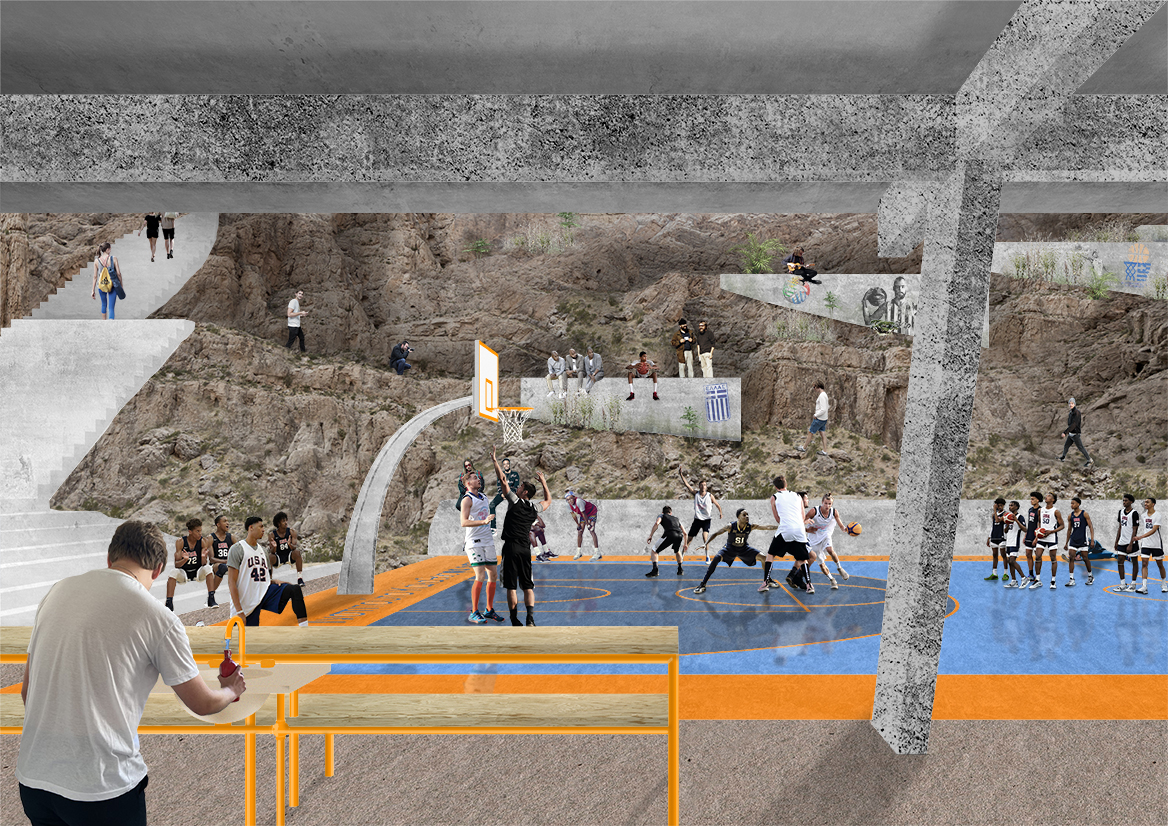


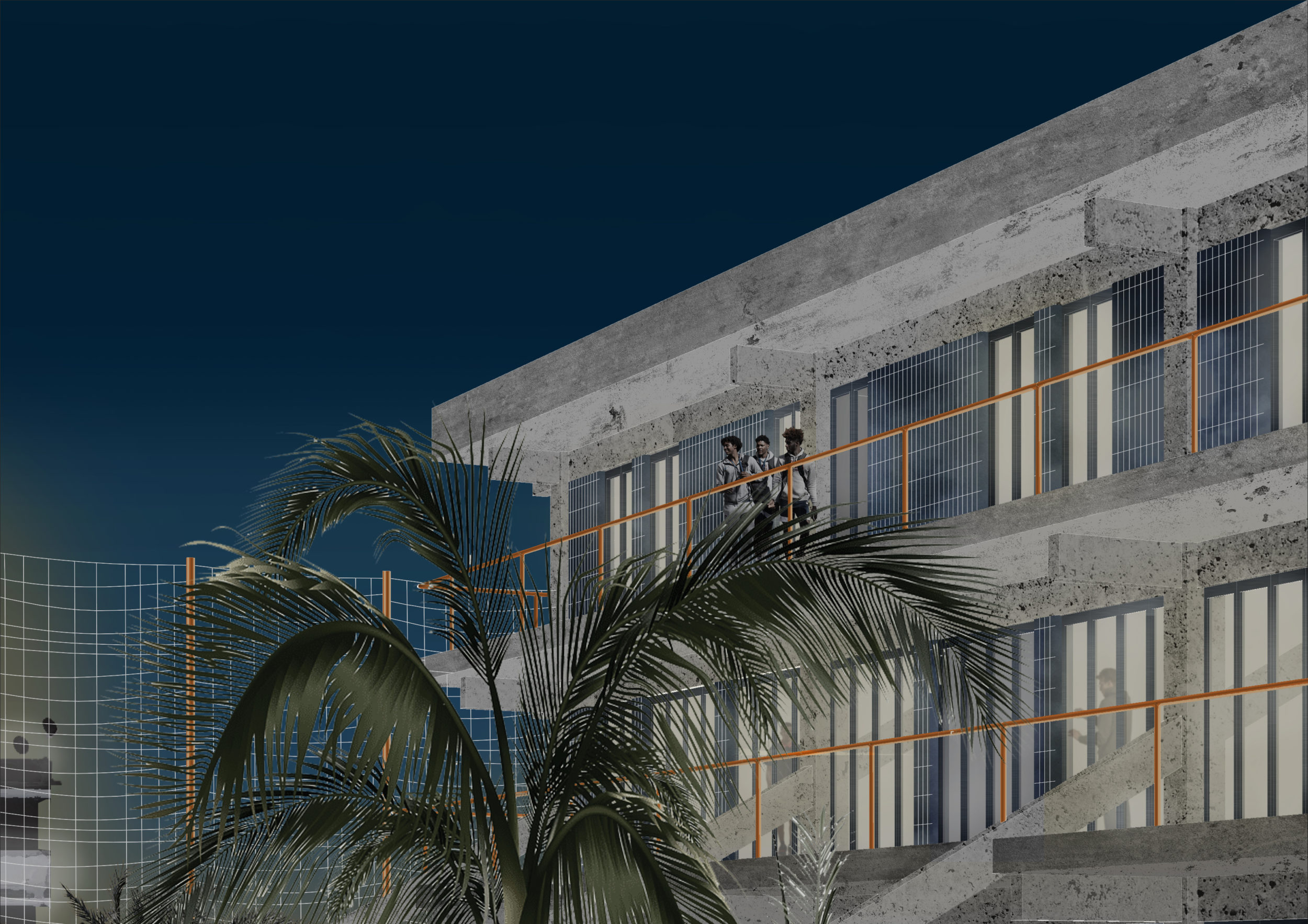
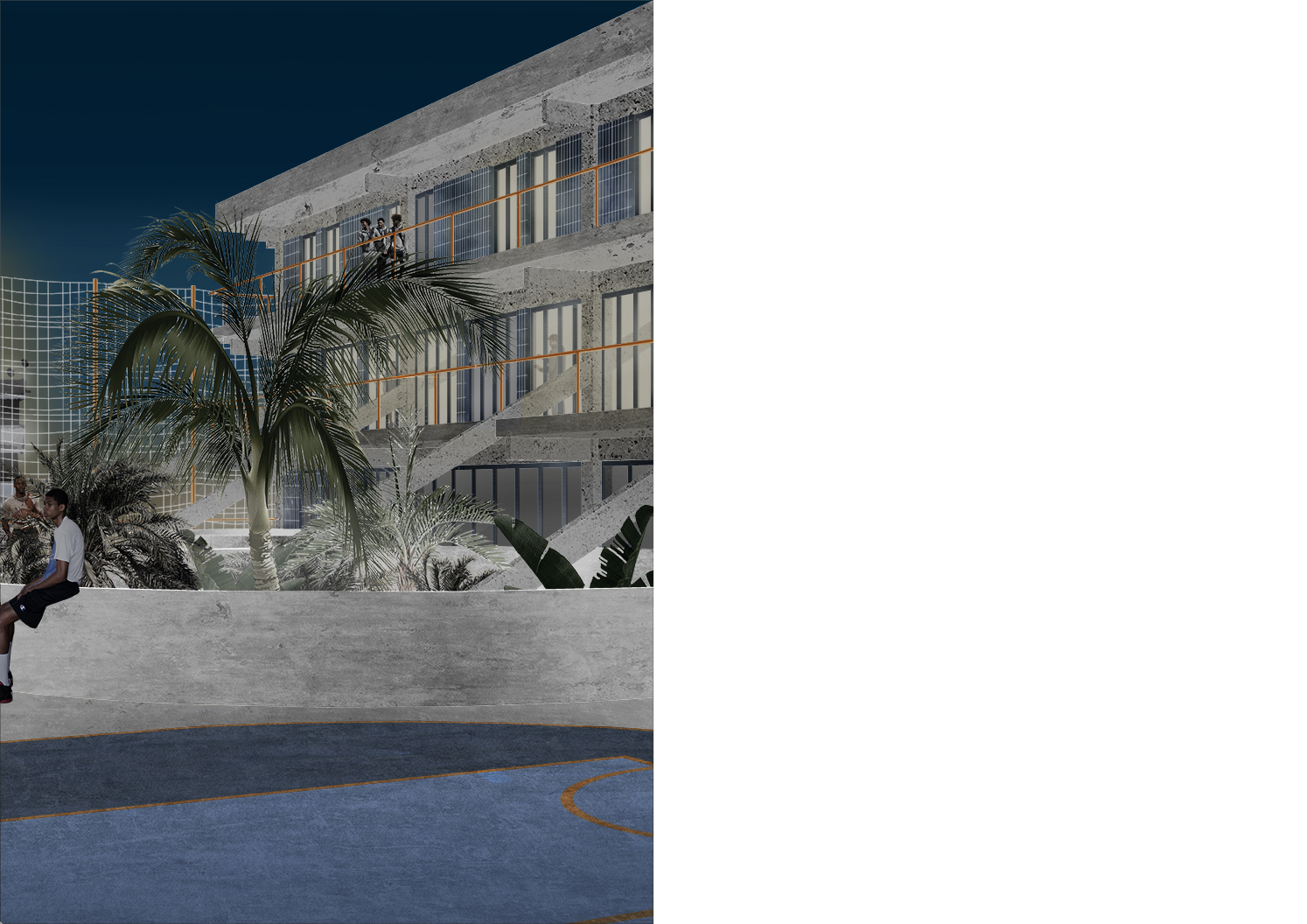
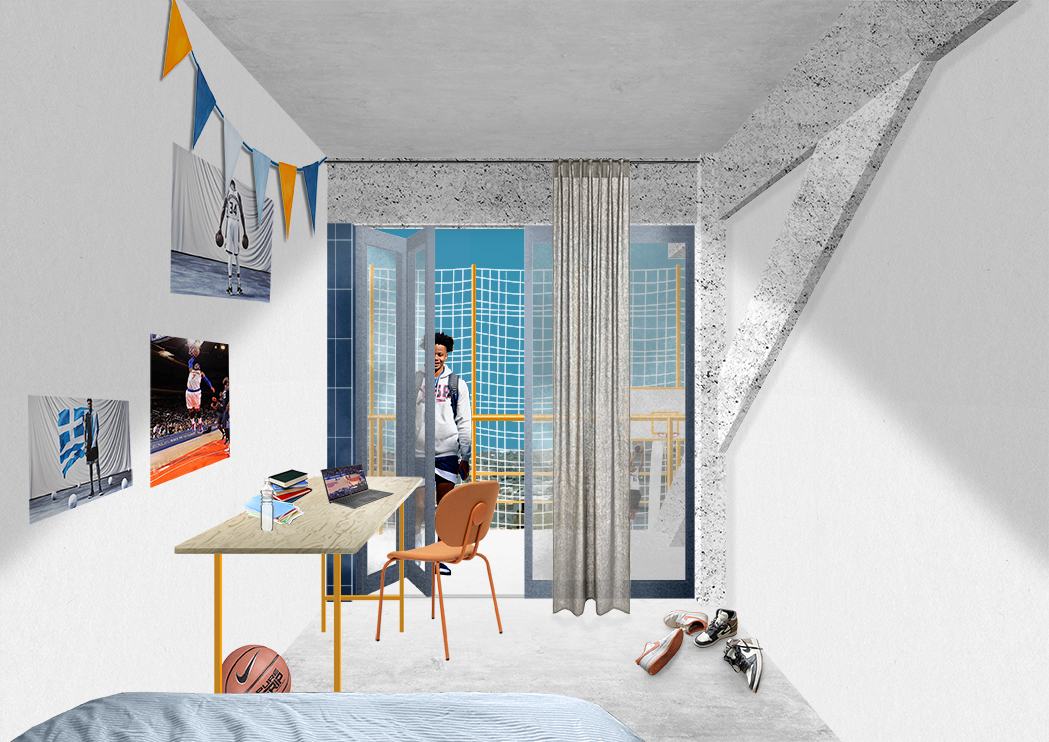
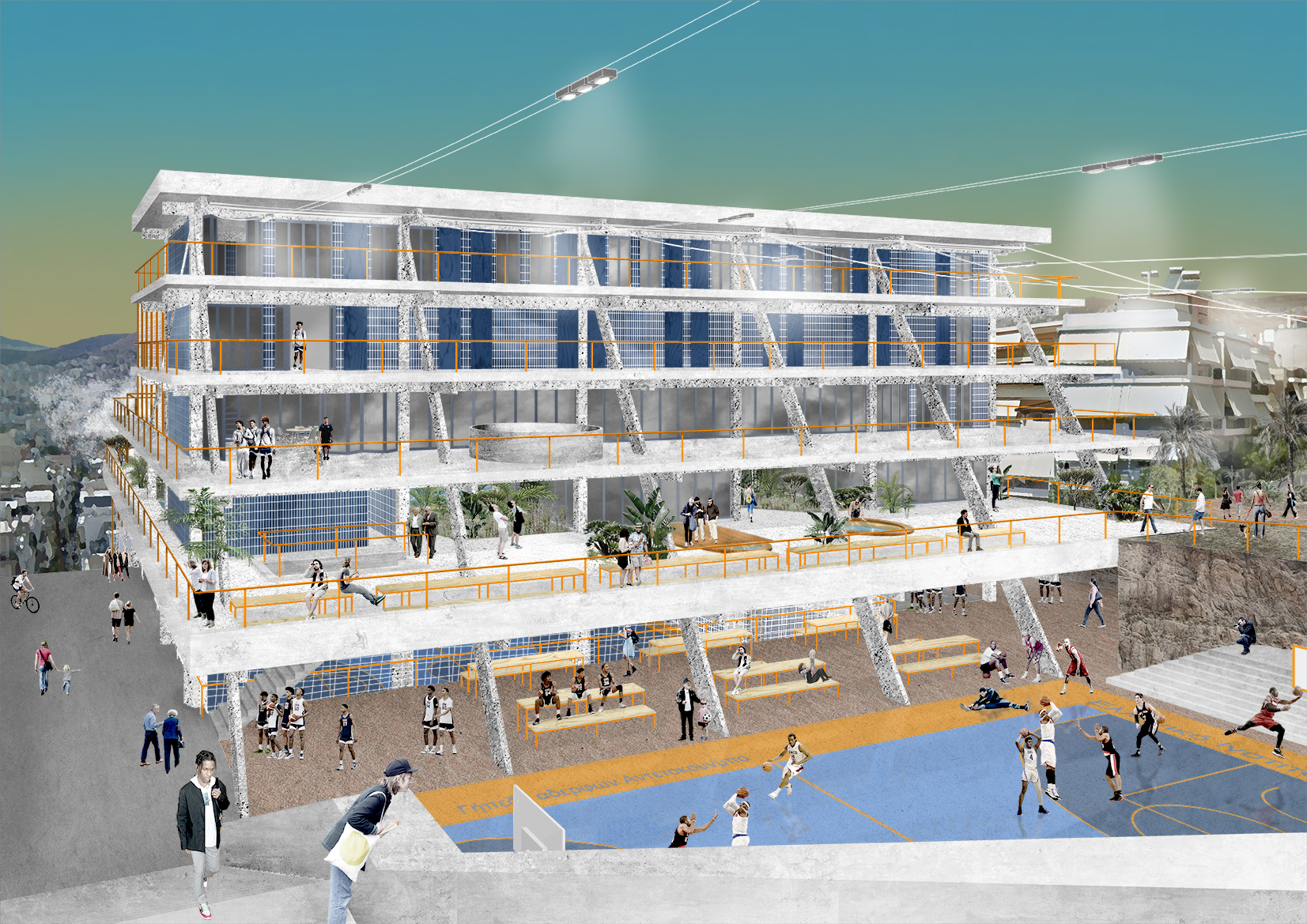





















































Basketball in Greece is by far the most popular sport and especially in Athens where we can count three professional teams that took over the EuroLeague.
The Greek Basketball Institute is a Training Center for basketball, a place where students/athletes from 13 to 17 years old live, study high school program and practice basketball to become professional athletes. It creates a world in itself.
This facility is located in Nikaïa in the suburb of Athens on a site very close to the Alsos Dexamenis cliff. Considering the implantation of this project in the city, it is relevant that it permits to cross its plot. The strong topography creates a 25 meters difference in-between the lowest and highest point. This first ambition has been one of the main constraints that structure the project. This architectural intervention permits to cross the site and climb up the cliff going through public terraces and facilities.
The self-sufficiency of the training center that requires many different programs is a good occasion to provide services to the city, especially in Athens a city that definitely lake of public space. In fact, the Greek Basketball Institute leaves accessible to everyone some programs such as basketball courts, a gym, a laundromat, a physiotherapy center, a cafeteria … All those things are reserved for the students of the center at the hours needed. The entire building is public until the level of the suspended garden that touches the existing cliff to guarantee continuity and a fluid circulation. The rest of the building, in the three floors above, host the educational pole and two levels of housing. They are inaccessible to the public so that they stay totally reserved to the students of the center for surveillance and security reasons.
Things like colorful lines and the nets are borrowed from the universe of sport and basketball to build the identity of the building. A gradation in the mineral aspect of the project aims to set a hierarchy in-between the elements. First there is the raw cliff that is just cut to complete some spaces. Then the skeleton of the building made of concrete poured on-site is “bouchardé” in order to have an expressive texture. Finally the waxed concrete slabs offer a smoother finish. This way we get to the purest mineral texture as we go up, started from the raw cliff to reveal the mineral identity of the site.
According to John Cage, “an experimental action” is one “the outcome of which is not foreseen.” Titling this course Architecture & Experience celebrates on the one hand its attachment to the question of high architecture as a discipline forged in historical and theoretical projects and, on the other, the experimental nature of an explorative approach that has been an operative concept of said discipline ever since the Renaissance – explorative, but still grounded in concrete reality.
Theory, by identifying the working principles defining architectonic forms along time, makes possible every kind of parallel while transforming every sort of question into potential architectural problematics. This is our main field of exploration.
Theory allows us to write the narrative that defines the rules of the project on the one hand and give it a mean on the other hand. Reason helps us to imagine narratives that, considering the rules of nature and reality, allow us to justify from a rational point of view disposals that would be irrational in a different conceptual context. Thus we can succeed in building dreams from the ordinary condition.
Athens is a condensator of the most glorious Antique European architecture and of the almost non planned urban forms of today that makes of it a laboratory for exploring the contemporary status of architecture and city. As usual, students have not traveled to Athens, to work more from the imaginary of the city than from its reality.